| The Hartford Financial Services Group, Inc. | ||||||||
 (Name of Registrant as Specified In Its Charter) | ||||||||
| (Name of Person(s) Filing Proxy Statement, if Other Than the Registrant) | ||||||||
| Filed by the Registrant [X] | ||||||||||||||
| Filed by a Party other than the Registrant [ ] | ||||||||||||||
| Check the appropriate box: | ||||||||||||||
| [ ] | Preliminary Proxy Statement | [ ] | Soliciting Material Under Rule 14a-12 | |||||||||||
| [ ] | Confidential, For Use of the Commission Only (as permitted by Rule 14a-6(e)(2)) | |||||||||||||
| [X] | Definitive Proxy Statement | |||||||||||||
| [ ] | Definitive Additional Materials | |||||||||||||
| The Hartford Financial Services Group, Inc. | ||||||||
 (Name of Registrant as Specified In Its Charter) | ||||||||
| (Name of Person(s) Filing Proxy Statement, if Other Than the Registrant) | ||||||||
| Payment of Filing Fee (Check the appropriate box): | ||||||||||||||
| [X] | No fee required. | |||||||||||||
| [ ] | Fee computed on table below per Exchange Act Rules 14a-6(i)(4) and 0-11. | |||||||||||||
| 1 | Title of each class of securities to which transaction applies: | |||||||||||||
| 2 | Aggregate number of securities to which transaction applies: | |||||||||||||
| 3 | Per unit price or other underlying value of transaction computed pursuant to Exchange Act Rule 0-11 (set forth the amount on which the filing fee is calculated and state how it was determined): | |||||||||||||
| 4 | Proposed maximum aggregate value of transaction: | |||||||||||||
| 5 | Total fee paid: | |||||||||||||
| [ ] | Fee paid previously with preliminary materials: | |||||||||||||
| [ ] | Check box if any part of the fee is offset as provided by Exchange Act Rule 0-11(a)(2) and identify the filing for which the offsetting fee was paid previously. Identify the previous filing by registration statement number, or the form or schedule and the date of its filing. | |||||||||||||
| 1 | Amount previously paid: | |||||||||||||
| 2 | Form, Schedule or Registration Statement No.: | |||||||||||||
| 3 | Filing Party: | |||||||||||||
| 4 | Date Filed: | |||||||||||||
| NOTICE OF OF SHAREHOLDERS | 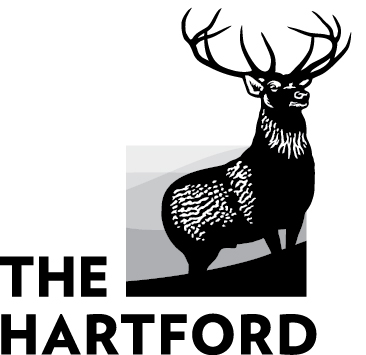 | |||||
Date and Time | |||||||||||||||||
Wednesday, May | |||||||||||||||||
| 19, 2021 12:30 p.m. EDT | |||||||||||||||||
Access* Our Annual Meeting | |||||||||||||||||
| accessed virtually at: www.virtualshareholdermeeting.com/HIG2021 Voting Items | |||||||||||||||||
Shareholders will vote | VOTING | ||||||||||||||||
 | By internet www.proxyvote.com | ||||||||||||||||
 | By toll-free telephone 1-800-690-6903 | ||||||||||||||||
 | By mail Follow the instructions on your proxy card | ||||||||||||||||
Board Recommendation | Page Reference |  | At the Annual Meeting Follow the instructions on the virtual meeting site | ||||||||||||||
1. Elect a Board of Directors for the coming year; | FOR | 13 | |||||||||||||||
2. Ratify the appointment of Deloitte & Touche LLP as our independent registered public accounting firm for the fiscal year ending December 31, | FOR | 33 | IMPORTANT INFORMATION IF YOU PLAN TOATTEND THE ANNUAL MEETING: You are entitled to participate (i.e., submit questions and/or vote) in the Annual Meeting if you were a shareholder of record at the close of business on March 22, 2021, the record date, or hold a legal proxy for the meeting provided by your bank, broker, or nominee. To participate, you will need the 16-digit control number provided on your proxy card, voting instruction form or notice. Shareholders may also vote or submit questions in advance of the meeting at www.proxyvote.com using their 16-digit control number. If you are not a shareholder or do not have a control number, you may still access the meeting as a guest, but you will not be able to participate. If you have difficulty accessing the Annual Meeting, please call the number on the registration page of the virtual meeting site. Technicians will be available to assist you. | ||||||||||||||
3. | Consider and approve, on a non-binding, advisory basis, the compensation of our named executive officers as disclosed in this proxy statement; and | FOR | 35 | ||||||||||||||
4. | Act upon any other business that may properly come before the Annual Meeting or any adjournment thereof. | ||||||||||||||||
Record Date | |||||||||||||||||
You may vote if you were a shareholder of record at the close of business on March The Hartford’s proxy materials are available via the internet at http://ir.thehartford.com** and www.proxyvote.com, which allows us to reduce printing and delivery costs and lessen adverse environmental impacts. We hope that you will participate in the Annual Meeting, either by attending and voting We urge you to review the proxy statement carefully and exercise your right to vote. | |||||||||||||||||
Dated: | |||||||||||||||||
| March 29, 2021 By order of the Board of Directors | |||||||||||||||||
 | |||||||||||||||||
| Donald C. Hunt | |||||||||||||||||
 |  | ||||||||||||||||||
 |  | ||||||||||||||||||
* In | |||||||||||||||||||
| this this proxy statement. | |||||||||||||||||||
 | |||||||||
 | |||||||||
| 1 | |||||||||
LETTER FROM OUR CHAIRMAN & CEO AND LEAD DIRECTOR | 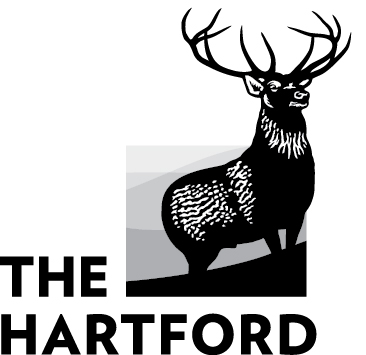 | ||||
| 2 | www.thehartford.com | ||||
 |  | |||||||||||
 | ||||||||||||
| Christopher J. Swift | Trevor Fetter | |||||||||||
| Chairman and Chief Executive Officer | Lead Director | |||||||||||
| 3 | ||||||
| PROXY SUMMARY | |||||
| BOARD AND GOVERNANCE MATTERS | |||||
| AUDIT MATTERS | |||||
| COMPENSATION MATTERS | |||||
| CEO | |||||
| INFORMATION ON STOCK OWNERSHIP | |||||
| INFORMATION ABOUT THE HARTFORD’S ANNUAL MEETING OF SHAREHOLDERS | |||||
| APPENDIX A: RECONCILIATION OF GAAP TO NON-GAAP FINANCIAL MEASURES | |||||
| 4 | www.thehartford.com | ||||
| NAVIGATING THE CHALLENGES AND OPPORTUNITIES OF 2020 | ||||||||
The COVID-19 pandemic and the increased focus on racial inequity in the U.S. greatly affected our employees, customers, communities and shareholders. In the face of these challenges, the company took the following actions to support all of our stakeholders: Ensuring Business Resiliency and Employee Health, Safety & Well-being •Previous technology investments enabled approximately 95% of in-office staff to immediately go remote •Provided additional benefits and support services to employees (e.g., free COVID testing, telehealth visits, weekly self-care guidance and remote work transition support) •Implemented appropriate safety measures (e.g., masks, distancing protocols, contact tracing and enhanced cleaning) •Increased focus on mental health Offering Customer Support •Instituted a moratorium on cancellation of policies for non-payment of premium through May 31, 2020 and waived late fees •Provided billing accommodations, including offering installment payment plans and deferred installment billing •Facilitated mid-term endorsements to commercial policies to adjust for changes in risk, reflecting reductions in payroll, revenue, sales and miles driven •Provided personal auto insurance customers a 15% refund on April, May and June premiums •Provided leniency in enforcement of certain policy provisions (e.g., claim notice requirements and vacancy provisions) Giving to Communities •Donated $1 million to national and local organizations focused on the pandemic •Donated $1.5 million to aid in the recovery efforts to support U.S. small businesses – 50% of funding benefited diverse-owned businesses •Matched hospitals across the country with local restaurants to sponsor meals for their front-line workers •Supported more than 2,500 of our small business customers across the country by making multiple holiday shopping guides and an internal shopping directory available to our 18,500 employees •Live-streamed fire safety and prevention education to more than 51,000 students, educators and parents in 750 cities and towns across the country as part of The Hartford’s first-ever National Junior Fire Marshal Day •Provided adaptive fitness kits to 750 individualswith physical disabilities to enable exercise and physical activity at home Reinforcing our Support for Racial Equity •Utilized established courageous conversation framework and brand messaging to show support for our Black colleagues, educate all employees, and demonstrate our commitment to fighting bias and racism •Reaffirmed our ongoing support of vital Black institutions including the National Museum of African American History and Culture •Intensified CEO leadership internally through all-employee panel discussions and externally through the CEO Action for Diversity & Inclusion, the CEO Action for Racial Equity, and the Corporate Call to Action convened by the Connecticut State Treasurer •Fast tracked elements of our diversity and inclusion strategy, including adopting diversity and inclusion goals for each business and functional area, with progress considered as part of the leadership performance and compensation assessment processes •Released EEO-1 data at the end of the first quarter of 2021 | ||||||||
| 2021 Proxy Statement | 5 | |||||||
| PROXY SUMMARY | ||||||||
ITEM 1 ELECTION OF DIRECTORS | |||||||||
| Each director nominee has an established record of accomplishment in areas relevant to overseeing our businesses and possesses qualifications and characteristics that are essential to a well-functioning and deliberative governing body. | |||||||||
| ✓ | The Board recommends a vote "FOR" each director nominee | ||||||||
| Director Nominee | Age(1) | Director since | Present or Most Recent Experience | Independent | Current Committees(2) | Other Current Public Company Boards | ||
| Yes | No | |||||||
| Robert B. Allardice III | 71 | 2008 | Former regional CEO, Deutsche Bank Americas | ✓ | • Audit • FIRMCo* | • Ellington Residential Mortgage REIT • GasLog Partners | ||
| Carlos Dominguez | 59 | 2018 | President and COO, Sprinklr | ✓ | • FIRMCo • NCG | • Medidata Solutions | ||
Trevor Fetter(3) | 58 | 2007 | Former Chairman, President and CEO, Tenet Healthcare | ✓ | • Comp • FIRMCo | |||
| Stephen P. McGill | 60 | 2017 | Retired Group President, Aon Plc, Retired Chairman and CEO, Aon Risk Solutions and Aon Benfield | ✓ | • Comp • FIRMCo | |||
| Kathryn A. Mikells | 52 | 2010 | CFO, Diageo plc | ✓ | • Audit • FIRMCo | • Diageo plc | ||
| Michael G. Morris | 71 | 2004 | Former Chairman, President and CEO, American Electric Power Company | ✓ | • Audit • FIRMCo • NCG | • Alcoa • L Brands • Spectra Energy Partners | ||
| Thomas A. Renyi | 72 | 2010 | Former Executive Chairman, Bank of New York Mellon; former Chairman and CEO, Bank of New York Company | ✓ | • Comp • FIRMCo | • Public Service Enterprise Group • Royal Bank of Canada | ||
| Julie G. Richardson | 54 | 2014 | Former Partner, Providence Equity Partners | ✓ | • Audit* • FIRMCo | • UBS • VEREIT • Yext | ||
| Teresa W. Roseborough | 59 | 2015 | Executive Vice President, General Counsel and Corporate Secretary, The Home Depot | ✓ | • Comp • FIRMCo • NCG | |||
| Virginia P. Ruesterholz | 56 | 2013 | Former Executive Vice President, Verizon Communications | ✓ | • Comp* • FIRMCo • NCG | • Bed Bath & Beyond • Frontier Communications | ||
| Christopher J. Swift | 57 | 2014 | Chairman and CEO, The Hartford | û | • FIRMCo | |||
| Greig Woodring | 66 | 2017 | Retired President and CEO, Reinsurance Group of America | ✓ | • Audit • FIRMCo | |||
and Present or Most Recent Experience | Independent | Director since | Current Committees(1) | Other Current Public Company Boards | |||||||||||||
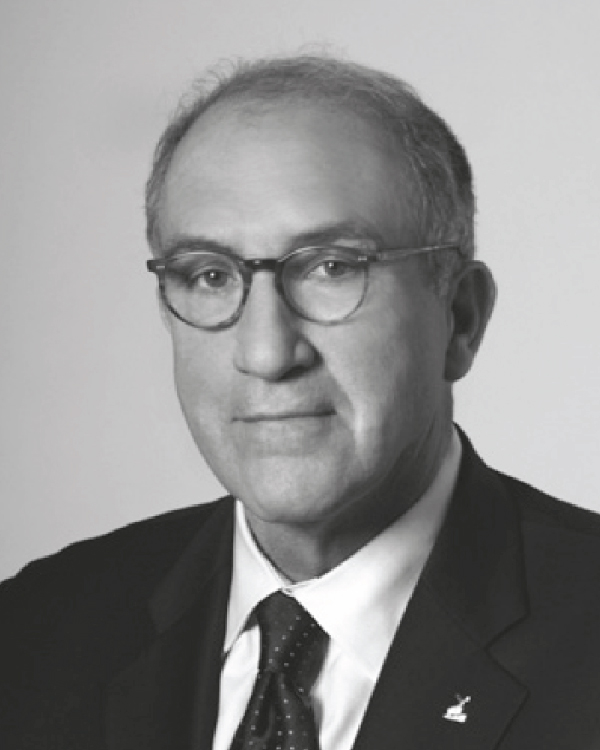 | Robert B. Allardice III, 74 Former regional CEO, Deutsche Bank Americas | ✓ | 2008 | • Audit • FIRMCo* | • EllingtonResidentialMortgage REIT | ||||||||||||
 | Larry D. De Shon, 61 Former President, CEO and COO, Avis Budget Group | ✓ | 2020 | • Audit • FIRMCo • NCG | |||||||||||||
 | Carlos Dominguez, 62 Vice Chairman and Lead Evangelist, Sprinklr | ✓ | 2018 | • Comp • FIRMCo • NCG | • PROS Holdings |
 | Trevor Fetter,(2) 61 Senior Lecturer, Harvard Business School | ✓ | 2007 | • Comp • FIRMCo | |||||||||||||
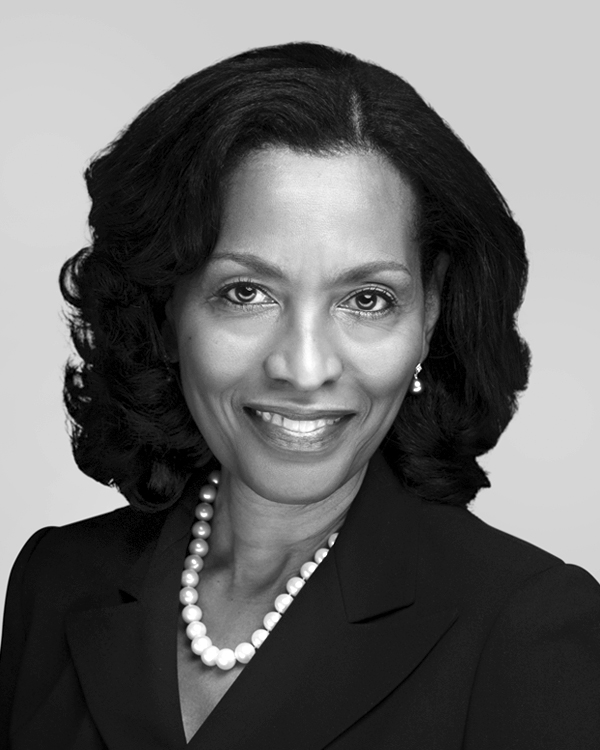 | Donna James, 63 President and Lardon & Associates | ✓ | 2021 | • FIRMCo | • Boston Scientific • L Brands | ||||||||||||
 | Kathryn A. Mikells, 55 Chief Financial Officer Diageo plc | ✓ | 2010 | • Audit* • FIRMCo | • Diageo plc | ||||||||||||
 | Michael G. Morris, 74 Former Chairman, President and American Electric Power Company | ✓ | 2004 | • Audit • FIRMCo • NCG* | • Alcoa • L Brands | ||||||||||||
 | Teresa W. Roseborough, 62 Executive Vice President, General Counsel and Corporate |
| ✓ | 2015 | • Comp • FIRMCo • NCG | |||||||||
 |
| ✓ | |||||||||||||||||
| 2013 | |||||||||||||||||
• Comp* • FIRMCo • NCG | • Bed Bath & Beyond | ||||||||||||||||
 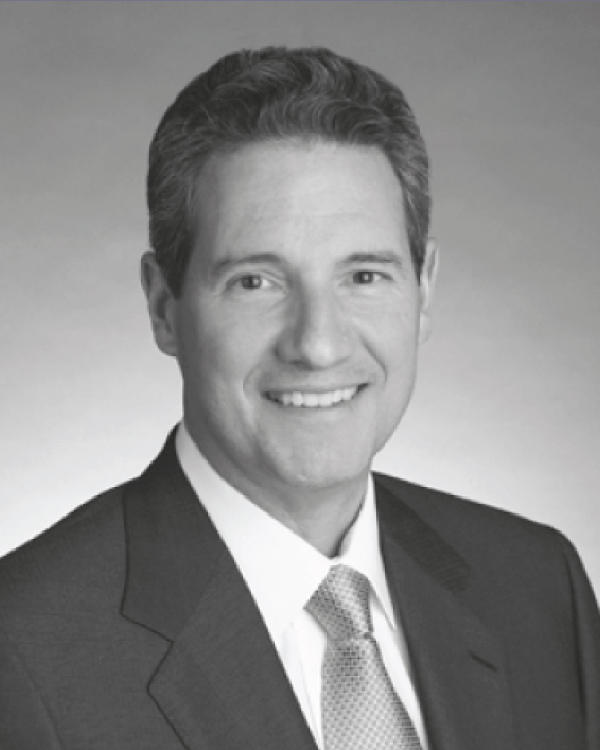 | Christopher J. Swift, 60 Chairman and CEO, The Hartford | 2014 | • FIRMCo | •Citizens Financial Group | |||||||||||||
 | Matthew E. Winter, 64 Former President, The Allstate Corporation | ✓ | 2020 | • FIRMCo • Comp | • ADT • H&R Block | ||||||||||||
 | Greig Woodring, 69 Former President and CEO, Reinsurance Group of America | ✓ | 2017 | • Audit • FIRMCo |
| 6 | ||||||
| PROXY SUMMARY | ||||||||
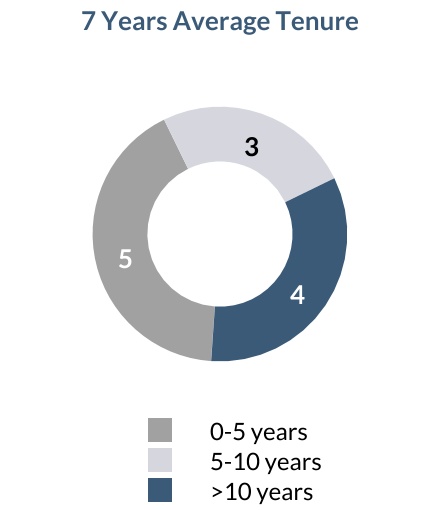

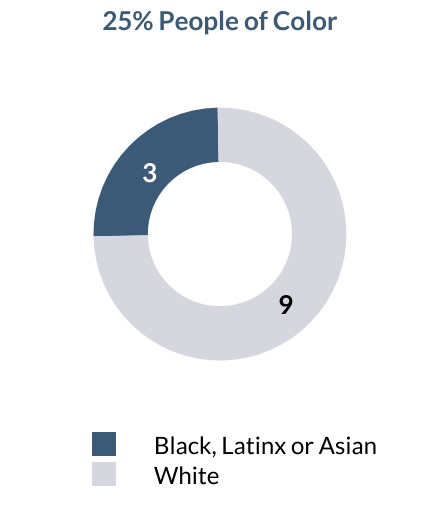
| Independent Oversight | ✓ | |||||||||||||
| ✓ | Independent key committees (Audit, Compensation, Nominating) | |||||||||||||
| ✓ | ||||||||||||||
| Engaged Board /Shareholder Rights | ✓ | |||||||||||||
| ✓ | Majority vote standard (with plurality carve-out for contested elections) | |||||||||||||
| ✓ | Proxy access right with market terms | |||||||||||||
| ✓ | Director resignation policy | |||||||||||||
| ✓ | Over-boarding policy limits total public company boards, including The Hartford, to | |||||||||||||
| ✓ | Rigorous Board and committee self-evaluation conducted | |||||||||||||
| ✓ | Meaningful Board education and training on recent and emerging governance and industry trends | |||||||||||||
| ✓ | Annual shareholder engagement program focused on | |||||||||||||
| Good Governance | ✓ | Board diversity of experience, tenure, age, gender, race and | ||||||||||||
| ✓ | Mandatory retirement age of 75 | |||||||||||||
| ✓ | Diversity policy or "Rooney Rule" commitment to ensure diverse candidates are included in the pool from which board and external CEO candidates are selected | |||||||||||||
| ✓ | Annual review of CEO succession plan by the independent directors with the CEO | |||||||||||||
| ✓ | Annual Board review of senior management long-term and emergency succession plans | |||||||||||||
| ✓ | Stock-ownership guidelines of 6x salary for CEO and 4x salary for other named executive officers | |||||||||||||
| ✓ | Annual Nominating Committee review of The Hartford's political and lobbying policies and expenditures | |||||||||||||
| Commitment to Sustainability | ✓ | Board oversight of sustainability matters; Nominating Committee oversight of sustainability governance framework | ||||||||||||
| ✓ | Sustainability Highlight Report published, tying enterprise commitments to tangible goals and reporting progress; first TCFD report published in 2020; SASB report for 2020 expected to be published in 2021 | |||||||||||||
| ✓ | Sustainability Governance Committee comprised of senior management charged with overseeing a comprehensive sustainability strategy and ensuring | |||||||||||||
| 2021 Proxy Statement | ||||||||
| ENVIRONMENT | SOCIAL | GOVERNANCE | |||||||||
 |  |  |  | ||||||||
| As an insurance company, we understand the risks that environmental challenges present to people and communities. As stewards of the environment, we are committed to mitigating climate change and reducing our carbon footprint incrementally each year. | We help individuals and communities prevail by building safe, strong and successful neighborhoods through targeted philanthropic investments, by partnering with like-minded national and local organizations, and by harnessing the power of our more than 18,500 employees to engage in their communities. | We are committed to building an inclusive and engaging culture where people are respected for who they are, recognized for how they contribute and celebrated for growth and exceptional performance. We value the diversity of our employees' skills and life experiences and invest deeply in their development so they can deliver on our strategy and propel our company forward. | We believe that doing the right thing every day is core to our character, and we are proud of our reputation for being a | ||||||||
ITEM 2 RATIFICATION OF APPOINTMENT OF INDEPENDENT REGISTERED PUBLIC ACCOUNTING FIRM | ||||||||
| As a matter of good corporate governance, the Board is asking shareholders to ratify the selection of Deloitte & Touche LLP as our independent registered public accounting firm for | ||||||||
| 2021. | |||||||
| 8 | www.thehartford.com | ||||
| PROXY SUMMARY | ||||||||
ITEM 3 ADVISORY VOTE TO APPROVE EXECUTIVE COMPENSATION | ||||||||
| The Board is asking shareholders to approve, on an advisory basis, the compensation of our named executive officers as disclosed in this proxy statement. Our executive compensation program is designed to promote long-term shareholder value creation and support our strategy by (1) encouraging profitable growth consistent with prudent risk management while maintaining a commitment to the company’s ethics and values, (2) | ||||||||
| ✓ | The Board recommends a vote "FOR" this item | |||||||

| PROXY SUMMARY | ||||||||
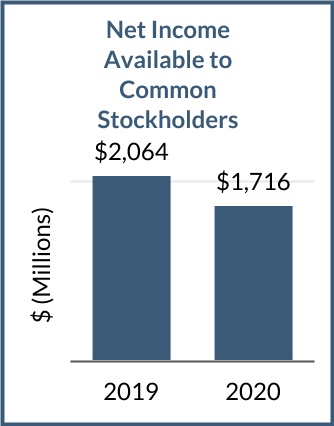

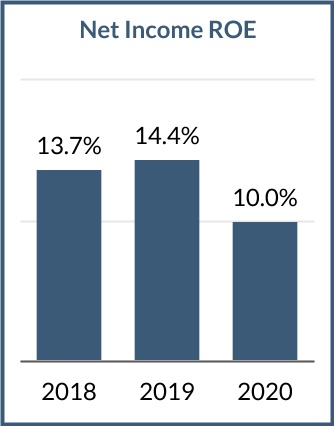
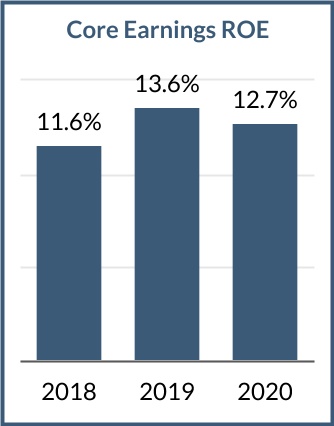
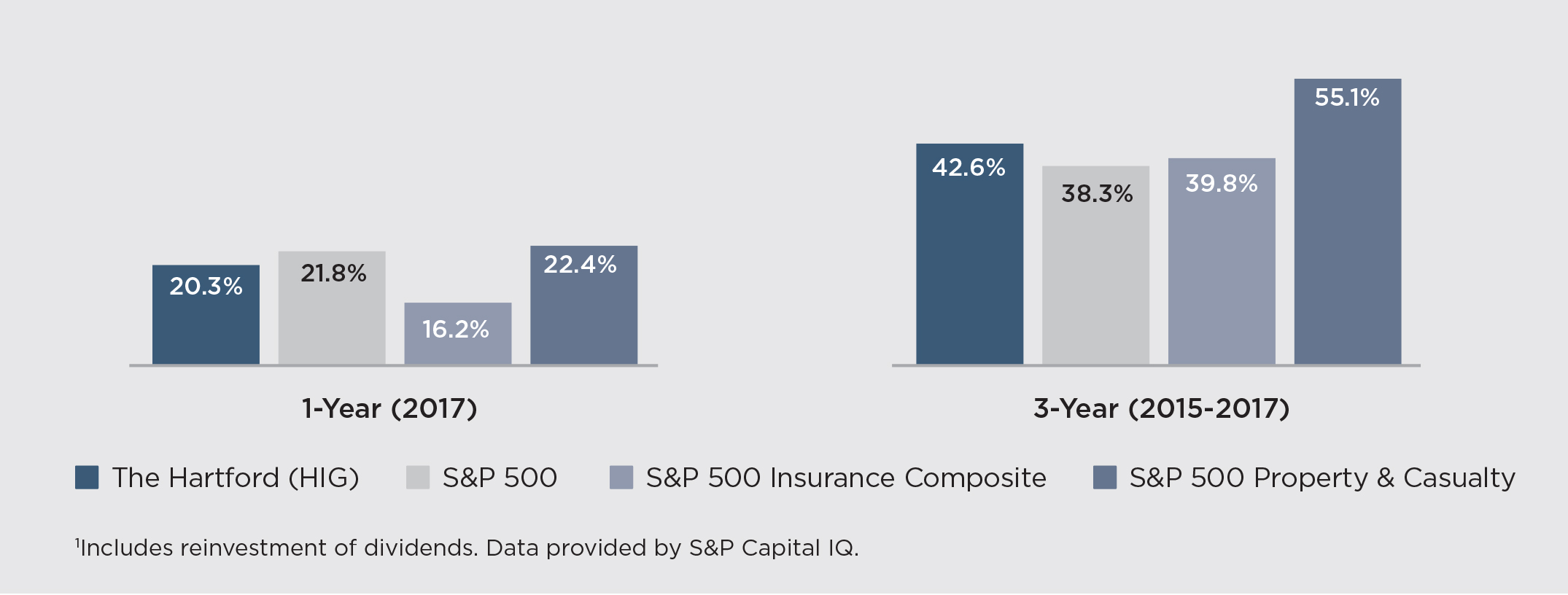

| Compensation Component | C. Swift | B. Bombara | D. Elliot | B. Johnson | W. Bloom | ||||||||||||||
| Base Salary Rate | $ | 1,100,000 | $ | 700,000 | $ | 925,000 | $ | 525,000 | $ | 550,000 | |||||||||
| 2017 AIP Award | $ | 4,675,000 | $ | 1,900,000 | $ | 3,150,000 | $ | 2,300,000 | $ | 1,575,000 | |||||||||
| 2017 LTI Award | $ | 7,500,000 | $ | 1,750,000 | $ | 5,000,000 | $ | 1,500,000 | $ | 1,000,000 | |||||||||
| Total 2017 Compensation Package | $ | 13,275,000 | $ | 4,350,000 | $ | 9,075,000 | $ | 4,325,000 | $ | 3,125,000 | |||||||||
| 10 | www.thehartford.com | ||||
| PROXY SUMMARY | ||||||||
| Compensation | Description | ||||
| Base Salary | • Fixed level of cash compensation based on market data, internal pay equity, experience, responsibility, expertise and performance. | ||||
| Annual Incentive Plan | • Variable cash award based primarily on annual company operating performance against a predetermined financial target and achievement of individual performance goals aligned with the company's strategic priorities. | ||||
| Long-Term Incentive Plan | •Variable awards granted based on individual performance, potential and market data. •Designed to drive long-term performance, align senior executive interests with shareholders, and foster retention. •Award mix (50% performance shares and 50% stock options) reflects stock price performance, peer-relative shareholder returns (stock price and dividends) and operating performance. | ||||
| Target Pay Mix — CEO | ||||||||
Salary 9% | Annual Incentive 24% | Long-Term Incentive 67% | ||||||
Variable with Performance: 91% | ||||||||
| Target Pay Mix — Other NEOs | ||||||||
Salary 16% | Annual Incentive 30% | Long-Term Incentive 54% | ||||||
Variable with Performance: 84% | ||||||||
| 2020 Compensation Decisions | Rationale | |||||||
| The Compensation Committee updated the payout curves for 2020 AIP and 2020-2022 performance share awards. | As a result of shareholder feedback received in 2019, the Compensation Committee made the following changes for 2020 awards: • Updated the AIP curve for 2020 awards to expand the range from +/- 15% to +/-20% of target, requiring greater outperformance to achieve above target awards. (page 42) • Updated the TSR payout curve for performance share awards granted in 2020 to target the 55th percentile. (pages 45-46) | |||||||
| The Compensation Committee approved an AIP funding level of | Performance against the pre-established Compensation Core Earnings | |||||||
| The Compensation Committee certified a | The company's average annual Compensation Core ROE during the performance period was | |||||||
| Base Salary | AIP Award | LTI Award | Total Compensation | |||||||||||||||||||||||||||||||||||
| NEO | 2020 | Change from 2019 | 2020 | Change from 2019 | 2020 | Change from 2019 | 2020 | Change from 2019 | ||||||||||||||||||||||||||||||
| Christopher Swift | $ | 1,150,000 | 0% | $ | 2,400,000 | (45.9)% | $ | 8,500,000 | 3.0% | $ | 12,050,000 | (12.9) | % | |||||||||||||||||||||||||
| Beth Costello | $ | 725,000 | 0% | $ | 1,000,000 | (45.9)% | $ | 1,850,000 | 4.2% | $ | 3,575,000 | (17.8) | % | |||||||||||||||||||||||||
| Douglas Elliot | $ | 950,000 | 0% | $ | 1,520,000 | (45.9)% | $ | 5,310,000 | 3.1% | $ | 7,780,000 | (12.7) | % | |||||||||||||||||||||||||
| William Bloom | $ | 625,000 | 0% | $ | 800,000 | (46.7)% | $ | 1,300,000 | 4.0% | $ | 2,725,000 | (19.3) | % | |||||||||||||||||||||||||
| David Robinson | $ | 600,000 | NA* | $ | 580,000 | NA* | $ | 1,300,000 | NA* | $ | 2,480,000 | NA* | ||||||||||||||||||||||||||
| 2021 Proxy Statement | 11 | |||||||
| PROXY SUMMARY | ||||||||
| ✓ | |||||||||||
| ✓ | Senior Executives | ||||||||||
| ✓ | Double-trigger requirement for cash severance and | ||||||||||
| ✓ | Cash severance | ||||||||||
| ✓ | Independent | ||||||||||
| ✓ | |||||||||||
| ✓ | |||||||||||
| ✓ | Prohibition on hedging, monetization, derivative and similar transactions with company securities | ||||||||||
| ✓ | Prohibition on Senior Executives | ||||||||||
| ✓ | |||||||||||
| ✓ | |||||||||||
| ✓ | Competitive burn rate and dilution for equity program | ||||||||||
| û | No | ||||||||||
| û | No individual employment agreements | ||||||||||
| û | No granting of stock options with an exercise price less than the fair market value of our common stock on the date of grant | ||||||||||
| û | No re-pricing | ||||||||||
| û | No buy-outs of underwater | ||||||||||
| û | No reload provisions in any stock option grant | ||||||||||
| û | No payment of dividends or dividend equivalents on | ||||||||||
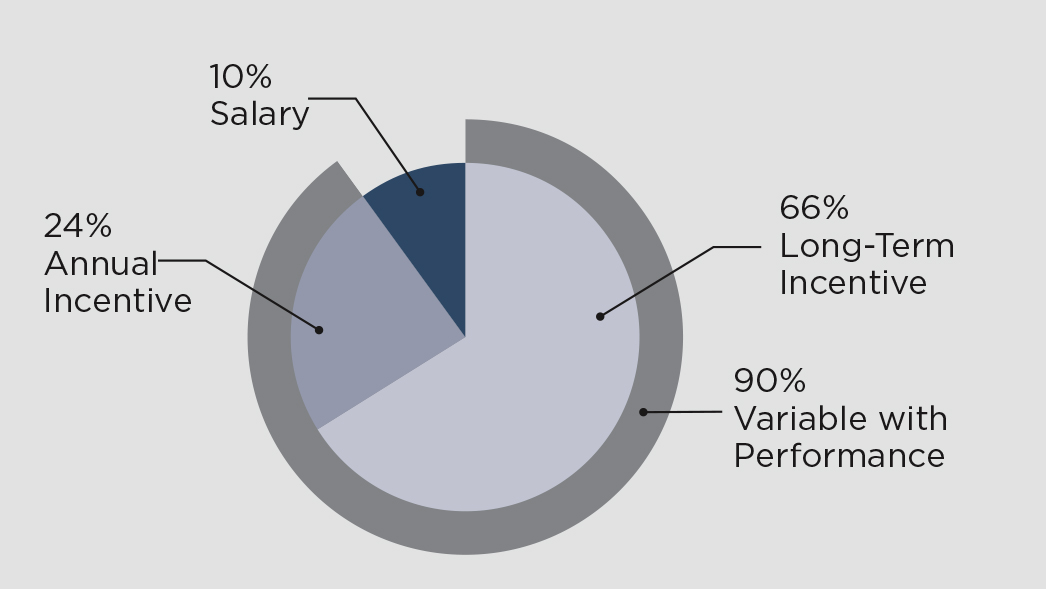 | 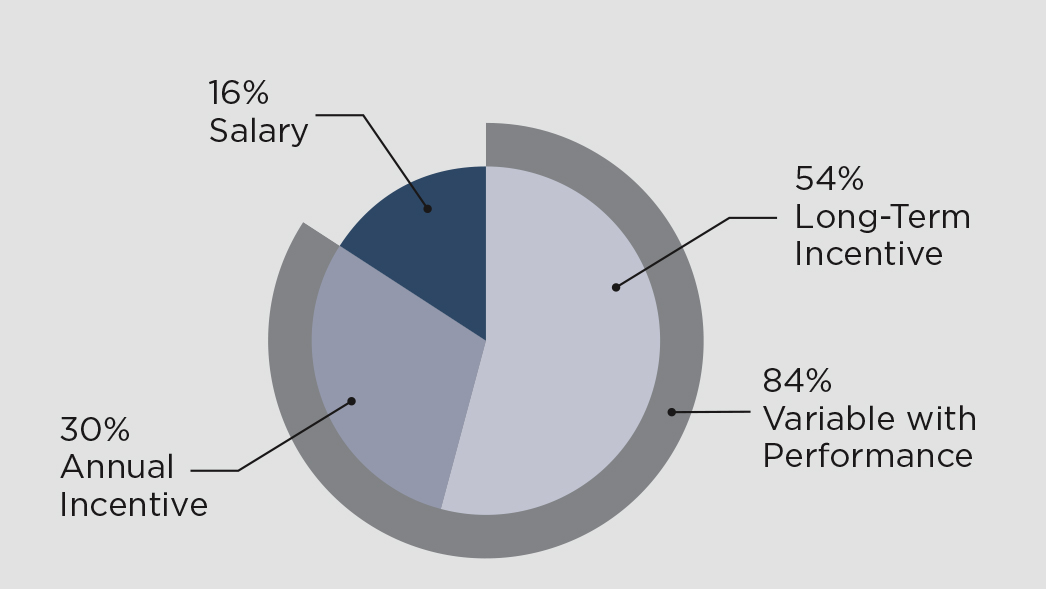 | |
| 12 | ||||||
| www.thehartford.com | ||
ITEM 1 | ||||||||||
ELECTION OF DIRECTORS |  | |||||||||
| The Nominating Committee believes | ||||||||||
| ✓ | The Board recommends a vote "FOR" each director nominee | |||||||||
| Independent Oversight | ✓ | |||||||||||||
| ✓ | Independent key committees (Audit, Compensation, Nominating) | |||||||||||||
| ✓ | ||||||||||||||
| Engaged Board /Shareholder Rights | ✓ | |||||||||||||
| ✓ | Majority vote standard (with plurality carve-out for contested elections) | |||||||||||||
| ✓ | Proxy access right with market terms | |||||||||||||
| ✓ | Director resignation policy | |||||||||||||
| ✓ | Over-boarding policy limits total public company boards, including The Hartford, to | |||||||||||||
| ✓ | Rigorous Board and committee self-evaluation conducted | |||||||||||||
| ✓ | Meaningful Board education and training on recent and emerging governance and industry trends | |||||||||||||
| ✓ | Annual shareholder engagement program focused on | |||||||||||||
| Good Governance | ✓ | Board diversity of experience, tenure, age, gender, race and | ||||||||||||
| ✓ | Mandatory retirement age of 75 | |||||||||||||
| ✓ | Diversity policy or "Rooney Rule" commitment to ensure diverse candidates are included in the pool from which board and external CEO candidates are selected | |||||||||||||
| ✓ | Annual review of CEO succession plan by the independent directors with the CEO | |||||||||||||
| ✓ | Annual Board review of senior management long-term and emergency succession plans | |||||||||||||
| ✓ | Stock-ownership guidelines of 6x salary for CEO and 4x salary for other named executive officers | |||||||||||||
| ✓ | Annual Nominating Committee review of The Hartford's political and lobbying policies and expenditures | |||||||||||||
| Commitment to Sustainability | ✓ | Board oversight of sustainability matters; Nominating Committee oversight of sustainability governance framework | ||||||||||||
| ✓ | Sustainability Highlight Report published, tying enterprise commitments to tangible goals and reporting progress; first TCFD report published in 2020; SASB report for 2020 expected to be published in 2021 | |||||||||||||
| ✓ | Sustainability Governance Committee comprised of senior management charged with overseeing a comprehensive sustainability strategy and ensuring | |||||||||||||
| 2021 Proxy Statement | 13 | |||||||
| BOARD AND GOVERNANCE MATTERS | ||||||||
| Board Chair | Independent Lead Director | |||||||
The roles of CEO and Chairman of the Board (“Chairman”) are held by Christopher Swift. Mr. Swift has served as CEO since July 1, 2014, and was appointed Chairman on January 5, 2015. In late 2014, before Mr. Swift assumed the role of Chairman, the Board deliberated extensively on our board leadership structure, seeking feedback from shareholders and considering corporate governance analysis. The Board concluded then, and continues to believe, that our historical approach of combining the roles of CEO and Chairman while maintaining strong, independent board leadership is the optimal leadership structure for the Board to carry out its oversight of our strategy, business operations and risk management. The Board believes other elements of our corporate governance structure ensure independent directors can perform their role as fiduciaries in the Board’s oversight of management and our business, and minimize any potential conflicts that may result from combining the roles of CEO and Chairman. For example: • All directors other than Mr. Swift are independent; • An empowered and engaged Lead Director provides independent Board leadership and oversight; and • At each regularly scheduled Board meeting, the non-management directors meet in executive session without the CEO and Chairman present (six such meetings in 2020). As part of its evaluation process, the Board has committed to undertaking an annual review of its leadership structure to ensure it continues to serve the best interests of shareholders and positions the company for future success. | Whenever the CEO and Chairman roles are combined, our Corporate Governance Guidelines require the independent directors to elect an independent Lead Director. Trevor Fetter was elected our Lead Director in May 2017. The responsibilities and authority of the Lead Director include the following: •Presiding at all meetings of the Board at which the Chairman is not present, including executive sessions of the independent directors; •Serving as a liaison between the CEO and Chairman and the non-management directors; •Regularly conferring with the Chairman on matters of importance that may require action or oversight by the Board, ensuring the Board focuses on key issues and tasks facing The Hartford; •Approving information sent to the Board and meeting agendas for the Board; •Approving the Board meeting schedules to help ensure that there is sufficient time for discussion of all agenda items; •Maintaining the authority to call meetings of the independent non-management directors; •Approving meeting agendas and information for the independent non-management sessions and briefing, as appropriate, the Chairman on any issues arising out of these sessions; •If requested by shareholders, ensuring that they are available, when appropriate, for consultation and direct communication; and •Leading the Board’s evaluation process and discussion on board refreshment and director tenure. The Board believes that these duties and responsibilities provide for strong independent Board leadership and oversight. | |||||||
| 14 | ||||||
| BOARD AND GOVERNANCE MATTERS | ||||||||

 | ||||||||
Board Evaluation and Development of Goals (May) | The Lead Director, or third-party evaluator, leads a Board evaluation discussion in an executive session guided by the Board’s self-assessment questionnaire and | |||||||
 | Annual Corporate Governance Review / Shareholder Engagement Program (October to December) | The Nominating Committee performs an annual review of The Hartford's corporate governance policies and practices in light of best practices, recent developments and trends. In addition, the Nominating Committee reviews feedback on governance issues provided by shareholders during our annual shareholder engagement program. | ||||||
 | Interim Review of Goals (December) | The Lead Director leads an interim review of progress made against the goals established during the Board evaluation discussion in May. | ||||||
 | Board Self-Assessment Questionnaires (February) | The governance review and shareholder feedback • • • • • | ||||||
 | One-on-One Discussions (February to May) | The Lead Director, or third-party evaluator, meets individually with each independent director on Board effectiveness, dynamics and areas for improvement. Beginning in 2022, third-party led discussions will also include directors' evaluations of their peers. | ||||||
| 15 | ||||||||
| BOARD AND GOVERNANCE MATTERS | ||||||||
 | Development of Candidate Specification |  |  | Screening of Candidates |  |  | Meeting With Candidates |  |  | Decision and Nomination | ||||||||||||||||||||||
•Develop skills matrix to identify desired skills and attributes, including diversity •Target areas of expertise aligned with our strategy | •Select outside search firms to lead process and/or consider internal or shareholder recommendations •Screen candidates for each specification identified | •Top candidates are interviewed by Nominating Committee members, other directors, and management •Finalist candidates undergo background and conflicts checks | •Nominating Committee recommendation of candidates and committee assignments to full Board •Board consideration and adoption of recommendation | |||||||||||||||||||||||||||||
| 16 | www.thehartford.com | ||||
| BOARD AND GOVERNANCE MATTERS | ||||||||



| 2021 Proxy Statement | 17 | |||||||
| BOARD AND GOVERNANCE MATTERS | ||||||||
| AUDIT COMMITTEE | ||||||||
R. Allardice L. De Shon K. Mikells (Chair) M. Morris G. Woodring | “ • Oversees the integrity of • Oversees • Oversees • Oversees the performance of • Oversees •Oversees the company's compliance with legal and regulatory requirements and our Code of Ethics and Business • Discusses with management policies with respect to risk assessment and risk | |||||||
| * | ||||||||
| COMPENSATION AND MANAGEMENT DEVELOPMENT COMMITTEE | |||||
C. Dominguez T. Fetter T. Roseborough V. Ruesterholz (Chair) MEETINGS IN 2020: 6 | “ Virginia Ruesterholz, Committee Chair since 2016 • Oversees executive compensation and assists • Works with management to develop a clear relationship between pay levels, performance and returns to shareholders, and to align • Has sole authority to retain, compensate and terminate any consulting firm used to evaluate and advise on executive compensation • Considers independence standards required by the NYSE or applicable law • • Reviews succession and continuity plans for the CEO and each member of the executive leadership team that reports to the CEO. • Meets annually with a senior risk officer • | ||||
| 18 | ||||||
| BOARD AND GOVERNANCE MATTERS | ||||||||
| FINANCE, INVESTMENT AND RISK MANAGEMENT COMMITTEE | |||||
R. Allardice (Chair) L. De Shon C. Dominguez T. Fetter K. Mikells M. Morris T. V. Ruesterholz C. G. Woodring | “In Robert B. Allardice III, Committee Chair since 2016 • Reviews and recommends changes to enterprise policies governing management activities relating to major risk exposures such as market risk, liquidity and capital requirements, insurance risks and • Reviews • Reviews and recommends changes to • Provides a forum for discussion among management and the entire Board of key financial, investment, and risk management | ||||
| NOMINATING AND CORPORATE GOVERNANCE COMMITTEE | |||||
Current Members: L. De Shon C. Dominguez M. Morris (Chair) T. Roseborough V. Ruesterholz | “ • Advises and makes recommendations to the Board on corporate governance • Considers potential nominees to the • Makes recommendations on the organization, size and composition of the Board and its • Considers the qualifications, compensation and retirement of • Reviews • Oversees the establishment, management and processes related to | ||||
| 2021 Proxy Statement | 19 | |||||||
| BOARD AND GOVERNANCE MATTERS | ||||||||
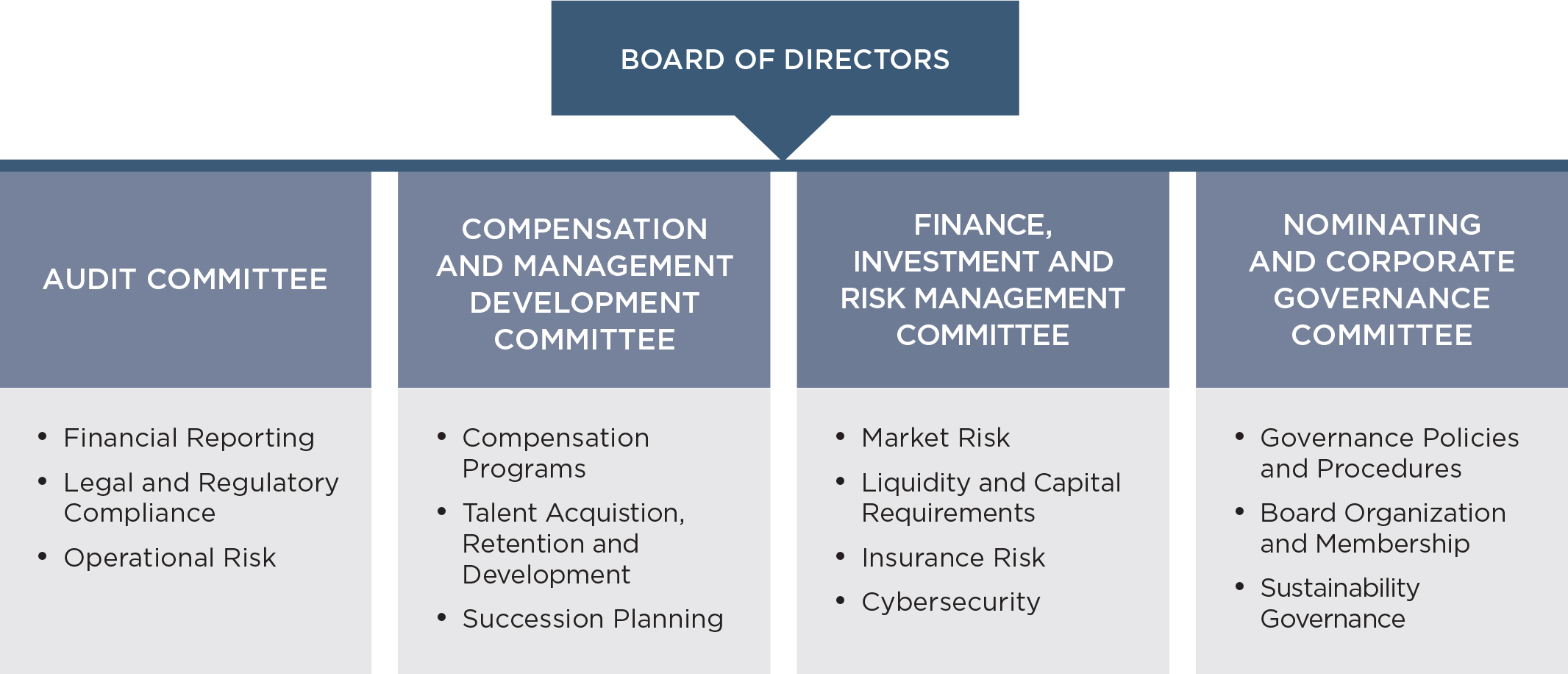
| BOARD OF DIRECTORS | ||||||||||||||||||||||||||||||||
AUDIT COMMITTEE •Financial reporting •Operational risk •Cybersecurity •Legal and regulatory compliance | COMPENSATION AND MANAGEMENT DEVELOPMENT COMMITTEE • Compensation programs • Talent acquisition, retention and development • Succession planning | FINANCE, INVESTMENT AND RISK MANAGEMENT COMMITTEE •Insurance risk •Market risk •Liquidity and capital requirements •Climate risk | NOMINATING AND CORPORATE GOVERNANCE COMMITTEE •Governance policies and procedures •Board organization and membership •Sustainability governance | |||||||||||||||||||||||||||||
| 20 | ||||||
| BOARD AND GOVERNANCE MATTERS | ||||||||
| What we heard from shareholders | ||||||
| Interest in additional transparency on diversity, equity and inclusion metrics and goals | • Adopted clear benchmarks for diverse representation in management • Expanded existing Board diversity policy to require that | |||||
| Further enhanced Board evaluation processes to include triennial assessments of individual directors as part of | ||||||
| “Always act with integrity and honesty, and be accountable in everything you do.” | ||||||||||||||
 | ||||||||||||||
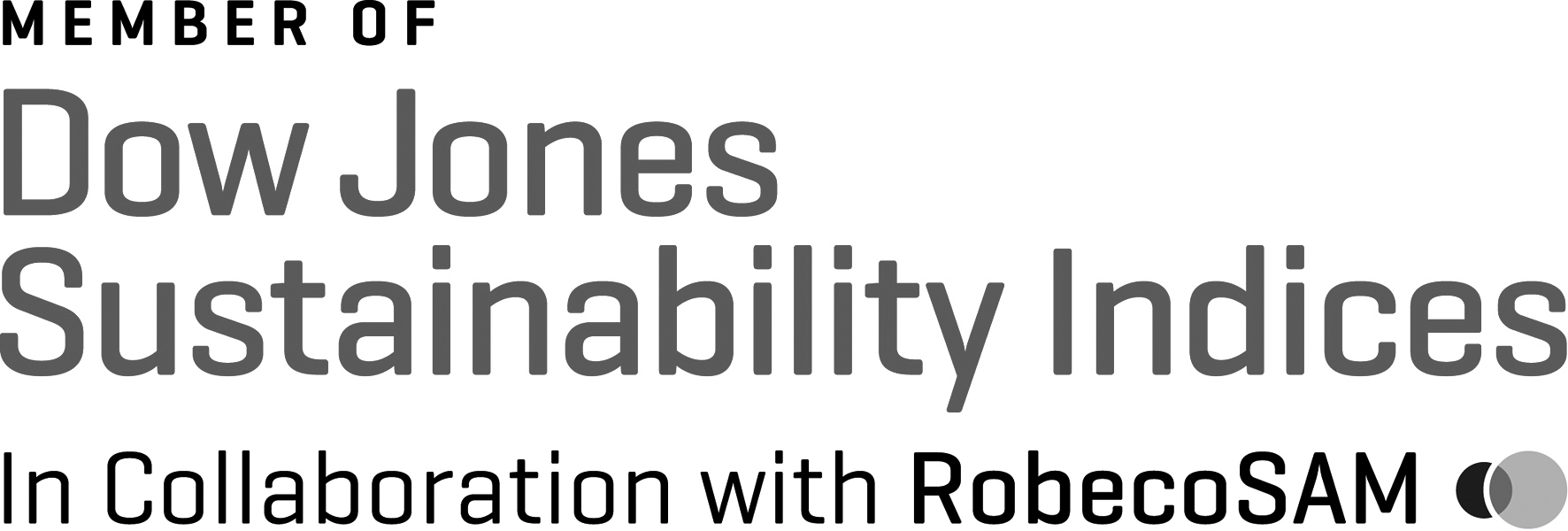 | |
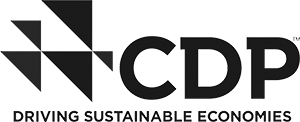 | |
| 17 | ||||||||
| BOARD AND GOVERNANCE MATTERS | ||||||||
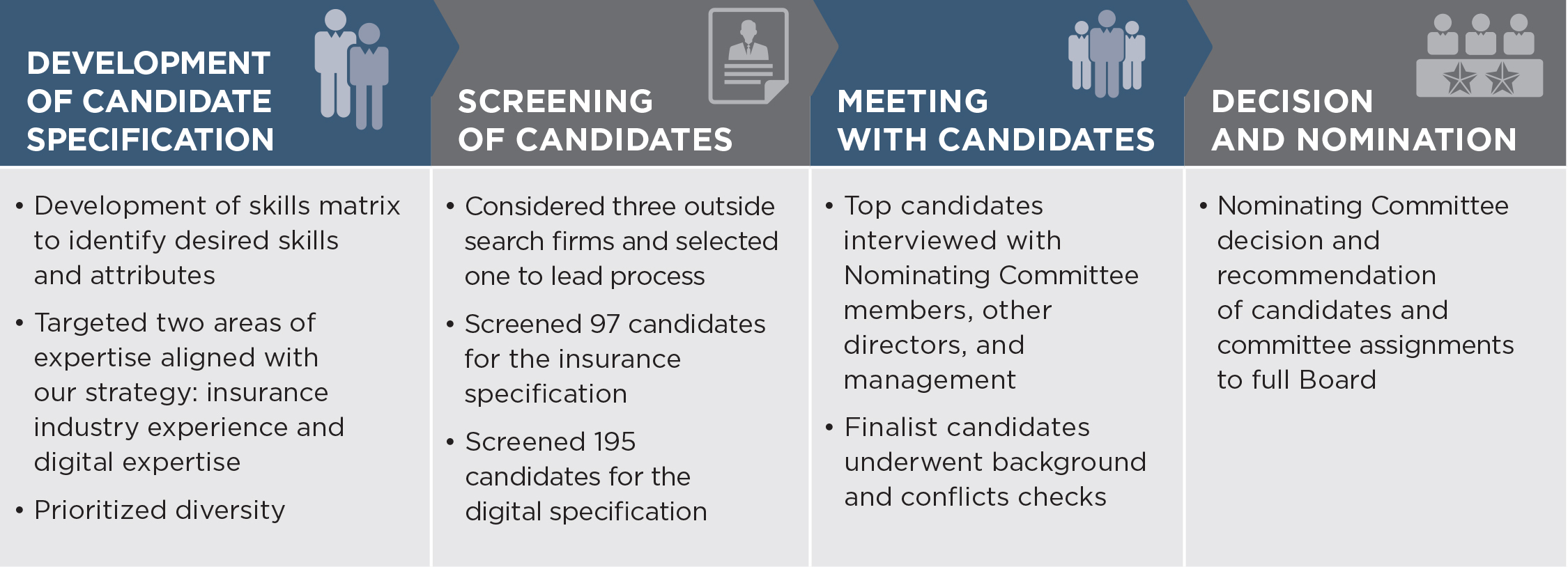
CURRENT MEMBERS:* R. Allardice L. De Shon K. Mikells (Chair) M. Morris G. Woodring MEETINGS IN 2020:9 | Kathryn Mikells, Committee Chair since 2019 ROLES AND RESPONSIBILITIES •Overseesthe integrity of the company's financial statements. •Oversees accounting, financial reporting and disclosure processes and theadequacy of management’s systems of internal control over financial reporting. •Oversees the company's relationship with, and performance of, the independent registered public accounting firm, including its qualifications andindependence. •Oversees the performance of the internal audit function. •Oversees operational risk, business resiliency and cybersecurity. •Oversees the company's compliance with legal and regulatory requirements and our Code ofEthics and Business Conduct. •Discusses with management policies with respect to risk assessment and riskmanagement. | |||||||
| * The Board has determined that all members are “financially literate” within the meaning of the listing standards of the NYSE and “audit committee financial experts” within the meaning of the SEC’s regulations. | ||||||||
CURRENT MEMBERS: C. Dominguez T. Fetter T. Roseborough V. Ruesterholz (Chair) M. Winter MEETINGS IN 2020:6 | Virginia Ruesterholz, Committee Chair since 2016 ROLES AND RESPONSIBILITIES • •Works with management to develop a clear relationship between pay levels,performance and returns to shareholders, and to align compensation structurewith objectives. •Has sole authority to retain, compensate and terminate any consulting firm used toevaluate and advise on executive compensation matters. •Considers independence standards required by the NYSE or applicable law prior to retaining compensation consultants, accountants, legal counsel or other advisors. •Reviews annually the diversity of the company’s workforce, the company’s diversity programs, and the company’s process and analysis for • Reviews succession and continuity plans for the CEO and each member of the executive leadership team that reports to the CEO. • Meets annually with a senior risk officer to discuss and evaluate whether incentive compensation arrangements create material risks to thecompany. •Responsible for compensation actions and decisions with respect tocertain senior executives, as | ||||
| 18 | www.thehartford.com | ||||
| BOARD AND GOVERNANCE MATTERS | ||||||||
| FINANCE, INVESTMENT AND RISK MANAGEMENT COMMITTEE | |||||
CURRENT MEMBERS: R. Allardice (Chair) L. De Shon C. Dominguez T. Fetter D. James K. Mikells M. Morris T. Roseborough V. Ruesterholz C. Swift M. Winter G. Woodring MEETINGS IN 2020: 5 | “In 2020, FIRMCo devoted substantial time to reviewing the COVID-19 pandemic’s impact on the risk profile of the company’s businesses, including insurance coverages, as well as the impact on the economy and financial markets caused by the pandemic on the company’s investments. The Committee also focused its oversight on risks associated with the legal and regulatory environment shaped by the COVID-19 pandemic.” Robert B. Allardice III, Committee Chair since 2016 ROLES AND RESPONSIBILITIES •Reviews and recommends changes to enterprise policies governing managementactivities relating to major risk exposures such as market risk, liquidity and capitalrequirements, insurance risks and climate change. •Reviews the company's overall risk appetite framework, which includes an enterprise riskappetite statement, risk preferences, risk tolerances, and an associated limitstructure for each of the company's major risks. •Reviews and recommends changes to financial, investment and riskmanagement guidelines. •Provides a forum for discussion among management and the entire Board of keyfinancial, investment, and risk management matters. | ||||
| NOMINATING AND CORPORATE GOVERNANCE COMMITTEE | |||||
Current Members: L. De Shon C. Dominguez M. Morris (Chair) T. Roseborough V. Ruesterholz MEETINGS IN 2020: 5 | “In 2020, the Nominating Committee continued its focus on board composition and effectiveness. As a result of Committee recommendations, the Board appointed Donna James as a director, bringing extensive insurance-industry experience to the Board, while also increasing the representation of women and people of color.” Michael G. Morris, Committee Chair since 2018 ROLES AND RESPONSIBILITIES •Advises and makes recommendations to the Board on corporate governancematters. •Considers potential nominees to •Makes recommendations on the organization, size and composition of the Boardand its committees. •Considers the qualifications, compensation and retirement of directors. •Reviews policies and reports on political contributions. • Oversees the establishment, management and processes related to environmental, social and governance activities. | ||||
| 2021 Proxy Statement | 19 | |||||||
| BOARD | ||||||||
| BOARD OF DIRECTORS | ||||||||||||||||||||||||||||||||
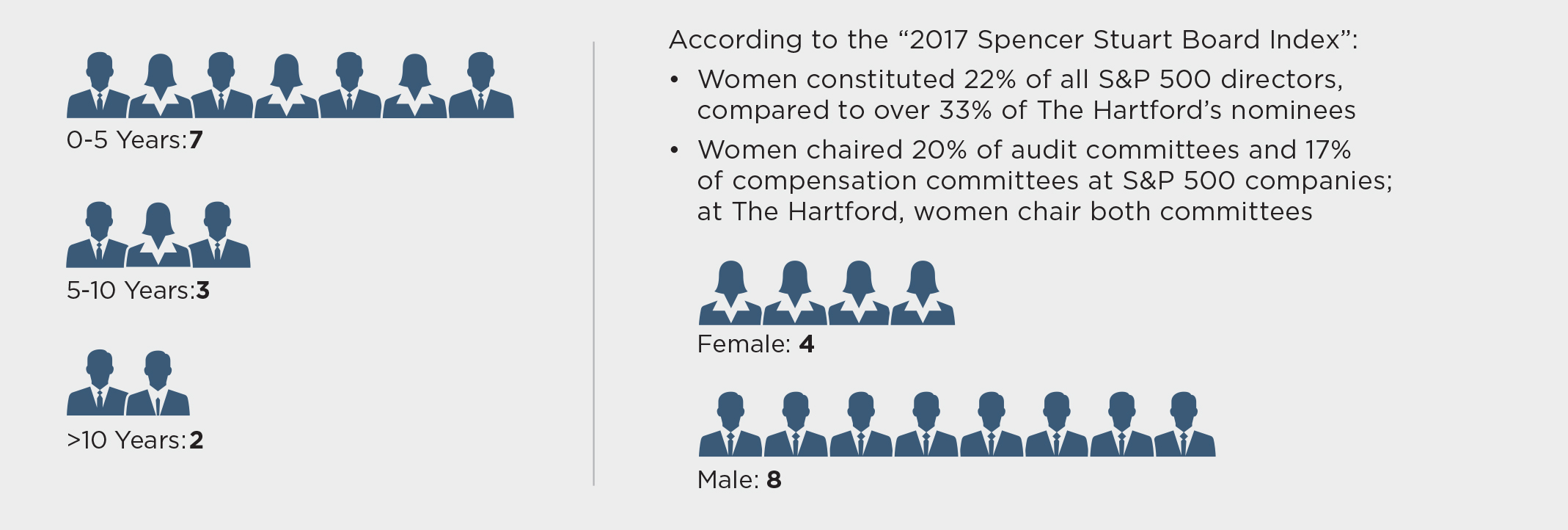 •Financial reporting •Operational risk •Cybersecurity •Legal and regulatory compliance | COMPENSATION AND MANAGEMENT DEVELOPMENT COMMITTEE • Compensation programs • Talent acquisition, retention and development • Succession planning | FINANCE, INVESTMENT AND RISK MANAGEMENT COMMITTEE •Insurance risk •Market risk •Liquidity and capital requirements •Climate risk | NOMINATING AND CORPORATE GOVERNANCE COMMITTEE •Governance policies and procedures •Board organization and membership •Sustainability governance | |||||||||||||||||||||||||||||
| 20 | www.thehartford.com | ||||
| BOARD AND GOVERNANCE MATTERS | ||||||||
| What we heard from shareholders | Actions taken | ||||
| Interest in additional transparency on diversity, equity and inclusion metrics and goals | • Released EEO-1 data at the end of the first quarter in 2021 • Adopted clear benchmarks for diverse representation in management • Expanded existing Board diversity policy to require that candidates with a diversity of race, gender and ethnicity are included in the pool of candidates from which external CEO candidates are considered | ||||
| Support for existing board composition, refreshment, and evaluation practices | Further enhanced Board evaluation processes to include triennial assessments of individual directors as part of third-party Board evaluation | ||||
| “Always act with integrity and honesty, and be accountable in everything you do.” | ||||||||||||||
| The Hartford's Code of Ethics and Business Conduct | ||||||||||||||
| 2021 Proxy Statement | 17 | |||||||
| BOARD AND GOVERNANCE MATTERS | ||||||||
| AUDIT COMMITTEE | ||||||||
CURRENT MEMBERS:* R. Allardice L. De Shon K. Mikells (Chair) M. Morris G. Woodring MEETINGS IN 2020:9 | “The Audit Committee assessed the financial and operational impacts of the COVID-19 pandemic on the company, including its ability to maintain operations in a remote work environment and its exposure to insured losses arising from the pandemic. The Committee also continued to assess processes and controls over managing the risk of cyber-attacks and conducted deep reviews of the risk and control environment for several lines of business and functional areas." Kathryn Mikells, Committee Chair since 2019 ROLES AND RESPONSIBILITIES •Overseesthe integrity of the company's financial statements. •Oversees accounting, financial reporting and disclosure processes and theadequacy of management’s systems of internal control over financial reporting. •Oversees the company's relationship with, and performance of, the independent registered public accounting firm, including its qualifications andindependence. •Oversees the performance of the internal audit function. •Oversees operational risk, business resiliency and cybersecurity. •Oversees the company's compliance with legal and regulatory requirements and our Code ofEthics and Business Conduct. •Discusses with management policies with respect to risk assessment and riskmanagement. | |||||||
| * The Board has determined that all members are “financially literate” within the meaning of the listing standards of the NYSE and “audit committee financial experts” within the meaning of the SEC’s regulations. | ||||||||
| COMPENSATION AND MANAGEMENT DEVELOPMENT COMMITTEE | |||||
CURRENT MEMBERS: C. Dominguez T. Fetter T. Roseborough V. Ruesterholz (Chair) M. Winter MEETINGS IN 2020:6 | “In 2020, the Committee focused substantial attention on understanding the impact of the COVID-19 pandemic and widespread social unrest on our employees, customers and businesses. In addition, the Committee monitored the responsive actions taken by the company to sustain full operations, build on our inclusive culture and expand our Diversity and Inclusion programs. In that context, the Committee carefully reviewed our compensation programs, including 2020 annual incentive funding, and introduced a Diversity and Inclusion measure in the 2021 long-term incentive program.” Virginia Ruesterholz, Committee Chair since 2016 ROLES AND RESPONSIBILITIES •Oversees executive compensation and assists in defining an executive totalcompensation policy. •Works with management to develop a clear relationship between pay levels,performance and returns to shareholders, and to align compensation structurewith objectives. •Has sole authority to retain, compensate and terminate any consulting firm used toevaluate and advise on executive compensation matters. •Considers independence standards required by the NYSE or applicable law prior to retaining compensation consultants, accountants, legal counsel or other advisors. •Reviews annually the diversity of the company’s workforce, the company’s diversity programs, and the company’s process and analysis for assessing pay equity. • Reviews succession and continuity plans for the CEO and each member of the executive leadership team that reports to the CEO. • Meets annually with a senior risk officer to discuss and evaluate whether incentive compensation arrangements create material risks to thecompany. •Responsible for compensation actions and decisions with respect tocertain senior executives, as described in theCompensation Discussion and Analysisbeginning on page 36. | ||||
| 18 | www.thehartford.com | ||||
| BOARD AND GOVERNANCE MATTERS | ||||||||
| FINANCE, INVESTMENT AND RISK MANAGEMENT COMMITTEE | |||||
CURRENT MEMBERS: R. Allardice (Chair) L. De Shon C. Dominguez T. Fetter D. James K. Mikells M. Morris T. Roseborough V. Ruesterholz C. Swift M. Winter G. Woodring MEETINGS IN 2020: 5 | “In 2020, FIRMCo devoted substantial time to reviewing the COVID-19 pandemic’s impact on the risk profile of the company’s businesses, including insurance coverages, as well as the impact on the economy and financial markets caused by the pandemic on the company’s investments. The Committee also focused its oversight on risks associated with the legal and regulatory environment shaped by the COVID-19 pandemic.” Robert B. Allardice III, Committee Chair since 2016 ROLES AND RESPONSIBILITIES •Reviews and recommends changes to enterprise policies governing managementactivities relating to major risk exposures such as market risk, liquidity and capitalrequirements, insurance risks and climate change. •Reviews the company's overall risk appetite framework, which includes an enterprise riskappetite statement, risk preferences, risk tolerances, and an associated limitstructure for each of the company's major risks. •Reviews and recommends changes to financial, investment and riskmanagement guidelines. •Provides a forum for discussion among management and the entire Board of keyfinancial, investment, and risk management matters. | ||||
| NOMINATING AND CORPORATE GOVERNANCE COMMITTEE | |||||
Current Members: L. De Shon C. Dominguez M. Morris (Chair) T. Roseborough V. Ruesterholz MEETINGS IN 2020: 5 | “In 2020, the Nominating Committee continued its focus on board composition and effectiveness. As a result of Committee recommendations, the Board appointed Donna James as a director, bringing extensive insurance-industry experience to the Board, while also increasing the representation of women and people of color.” Michael G. Morris, Committee Chair since 2018 ROLES AND RESPONSIBILITIES •Advises and makes recommendations to the Board on corporate governancematters. •Considers potential nominees to the Board. •Makes recommendations on the organization, size and composition of the Boardand its committees. •Considers the qualifications, compensation and retirement of directors. •Reviews policies and reports on political contributions. • Oversees the establishment, management and processes related to environmental, social and governance activities. | ||||
| 2021 Proxy Statement | 19 | |||||||
| BOARD AND GOVERNANCE MATTERS | ||||||||
| BOARD OF DIRECTORS | ||||||||||||||||||||||||||||||||
AUDIT COMMITTEE •Financial reporting •Operational risk •Cybersecurity •Legal and regulatory compliance | COMPENSATION AND MANAGEMENT DEVELOPMENT COMMITTEE • Compensation programs • Talent acquisition, retention and development • Succession planning | FINANCE, INVESTMENT AND RISK MANAGEMENT COMMITTEE •Insurance risk •Market risk •Liquidity and capital requirements •Climate risk | NOMINATING AND CORPORATE GOVERNANCE COMMITTEE •Governance policies and procedures •Board organization and membership •Sustainability governance | |||||||||||||||||||||||||||||
| 20 | www.thehartford.com | ||||
| BOARD AND GOVERNANCE MATTERS | ||||||||
| What we heard from shareholders | Actions taken | ||||
| Interest in additional transparency on diversity, equity and inclusion metrics and goals | • Released EEO-1 data at the end of the first quarter in 2021 • Adopted clear benchmarks for diverse representation in management • Expanded existing Board diversity policy to require that candidates with a diversity of race, gender and ethnicity are included in the pool of candidates from which external CEO candidates are considered | ||||
| Support for existing board composition, refreshment, and evaluation practices | Further enhanced Board evaluation processes to include triennial assessments of individual directors as part of third-party Board evaluation | ||||
| “Always act with integrity and honesty, and be accountable in everything you do.” | ||||||||||||||
| The Hartford's Code of Ethics and Business Conduct | ||||||||||||||
| 2021 Proxy Statement | 21 | |||||||
| BOARD AND GOVERNANCE MATTERS | ||||||||
| ENVIRONMENT | SOCIAL | GOVERNANCE | |||||||||
 |  |  |  | ||||||||
| As an insurance company, we understand the risks that environmental challenges present to people and communities. As stewards of the environment, we are committed to mitigating climate change and reducing our carbon footprint incrementally each year. | We help individuals and communities prevail by building safe, strong and successful neighborhoods through targeted philanthropic investments, by partnering with like-minded national and local organizations, and by harnessing the power of our more than 18,500 employees to engage in their communities. | We are committed to building an inclusive and engaging culture where people are respected for who they are, recognized for how they contribute and celebrated for growth and exceptional performance. We value the diversity of our employees' skills and life experiences and invest deeply in their development so they can deliver on our strategy and propel our company forward. | We believe that doing the right thing every day is core to our character, and we are proud of our reputation for being a company that places ethics and integrity above all else. | ||||||||
| ESG Governance | ||||||||
Under our Corporate Governance Guidelines, the full Board has oversight responsibility for The Hartford's corporate reputation and ESG activities. The Board receives a "deep dive" report on at least one ESG topic annually. The 2020 briefing provided a progress report of the company's actions in three priority areas: climate change and environmental stewardship, pay equity and representation, and data protection and customer privacy. In addition to the Board's oversight responsibility of substantive ESG topics, the Nominating Committee retains oversight of the governance framework and processes related to ESG activities. This includes oversight of the company's Sustainability Governance Committee, a management committee comprised of senior leaders from across the enterprise that sets and helps drive execution of the company's sustainability strategy. The Sustainability Governance Committee meets at least four times each year and reports to the full Board at least annually. In 2020, the Sustainability Governance Committee met four times. | ||||||||
| 22 | www.thehartford.com | ||||
| BOARD AND GOVERNANCE MATTERS | ||||||||
Annual Cash Compensation | Director Compensation Program | ||||
| Annual Retainer | $ | ||||
| Committee Chair Retainer | $35,000 – Audit $25,000 – FIRMCO, Compensation $ | ||||
| Lead Director Retainer | $ | ||||
| BOARD AND GOVERNANCE MATTERS | ||||||||
| Name | Fees Earned or Paid in Cash ($)(1) | Stock Awards ($)(2) | All Other Compensation ($) | Total ($) | |||||||||||||||||||
| Robert Allardice | 135,000 | 180,000 | 2,971 | 317,971 | |||||||||||||||||||
Larry D. De Shon(3) | 135,000 | 220,000 | 1,184 | 356,184 | |||||||||||||||||||
| Carlos Dominguez | 110,000 | 180,000 | 1,291 | 291,291 | |||||||||||||||||||
| Trevor Fetter | 150,000 | 180,000 | 1,291 | 331,291 | |||||||||||||||||||
| Kathryn A. Mikells | 145,000 | 180,000 | 1,015 | 326,015 | |||||||||||||||||||
| Michael G. Morris | 130,000 | 180,000 | 2,971 | 312,971 | |||||||||||||||||||
| Teresa W. Roseborough | 110,000 | 180,000 | 1,291 | 291,291 | |||||||||||||||||||
| Virginia P. Ruesterholz | 135,000 | 180,000 | 1,015 | 316,015 | |||||||||||||||||||
Matthew E. Winter(3) | 135,000 | 220,000 | 1,172 | 356,172 | |||||||||||||||||||
| Greig Woodring | 110,000 | 180,000 | 2,023 | 292,023 | |||||||||||||||||||
| Name | Fees Earned or Paid in Cash ($)(1) | Stock Awards ($)(2) | All Other Compensation ($) | Total ($) | |||||||
Robert Allardice(3) | 135,000 | 160,000 | 2,767 | 297,767 | |||||||
| Trevor Fetter | 135,000 | 160,000 | 811 | 295,811 | |||||||
Stephen P. McGill(4) | 41,700 | — | 312 | 42,012 | |||||||
| Kathryn A. Mikells | 100,000 | 160,000 | 271 | 260,271 | |||||||
| Michael G. Morris | 100,000 | 160,000 | 2,767 | 262,767 | |||||||
| Thomas Renyi | 100,000 | 160,000 | 2,767 | 262,767 | |||||||
Julie G. Richardson(3) | 135,000 | 160,000 | 571 | 295,571 | |||||||
| Teresa W. Roseborough | 100,000 | 160,000 | 811 | 260,811 | |||||||
Virginia P. Ruesterholz(3) | 135,000 | 160,000 | 811 | 295,811 | |||||||
Charles B. Strauss(3) | 125,000 | 160,000 | 2,767 | 287,767 | |||||||
| H. Patrick Swygert | 100,000 | 160,000 | 2,767 | 262,767 | |||||||
Greig Woodring(4) | 41,700 | — | 344 | 42,044 | |||||||
Stock Awards(1) | Stock Awards(1) | |||||||||||||||||||||||
| Name | Stock Grant Date(2) | Number of Shares or Units of Stock That Have Not Vested (#)(3) | Market Value of Shares or Units of Stock That Have Not Vested ($) | Name | Stock Grant Date(2) | Number of Shares or Units of Stock That Have Not Vested (#)(3) | Market Value of Shares or Units of Stock That Have Not Vested ($) | |||||||||||||||||
| Robert Allardice | 7/31/2017 | 2,921 | 164,394 | Robert Allardice | 8/3/2020 | 4,352 | 213,161 | |||||||||||||||||
| Larry D. De Shon | Larry D. De Shon | 8/3/2020 | 4,352 | 213,161 | ||||||||||||||||||||
| Carlos Dominguez | Carlos Dominguez | 8/3/2020 | 4,352 | 213,161 | ||||||||||||||||||||
| Trevor Fetter | 7/31/2017 | 2,921 | 164,394 | Trevor Fetter | 8/3/2020 | 4,352 | 213,161 | |||||||||||||||||
Stephen P. McGill(4) | — | — | — | |||||||||||||||||||||
| Kathryn A. Mikells | 7/31/2017 | 2,921 | 164,394 | Kathryn A. Mikells | 8/3/2020 | 4,352 | 213,161 | |||||||||||||||||
| Michael G. Morris | 7/31/2017 | 2,921 | 164,394 | Michael G. Morris | 8/3/2020 | 4,352 | 213,161 | |||||||||||||||||
| Thomas Renyi | 7/31/2017 | 2,921 | 164,394 | |||||||||||||||||||||
| Julie G. Richardson | 7/31/2017 | 2,921 | 164,394 | |||||||||||||||||||||
| Teresa W. Roseborough | 7/31/2017 | 2,921 | 164,394 | Teresa W. Roseborough | 8/3/2020 | 4,352 | 213,161 | |||||||||||||||||
| Virginia P. Ruesterholz | 7/31/2017 | 2,921 | 164,394 | Virginia P. Ruesterholz | 8/3/2020 | 4,352 | 213,161 | |||||||||||||||||
| Charles B. Strauss | 7/31/2017 | 2,921 | 164,394 | |||||||||||||||||||||
| H. Patrick Swygert | 7/31/2017 | 2,921 | 164,394 | |||||||||||||||||||||
Greig Woodring(4) | — | — | — | |||||||||||||||||||||
| Matthew E. Winter | Matthew E. Winter | 8/3/2020 | 4,352 | 213,161 | ||||||||||||||||||||
| Greig Woodring | Greig Woodring | 8/3/2020 | 4,352 | 213,161 | ||||||||||||||||||||
| 24 | ||||||
| BOARD AND GOVERNANCE MATTERS | ||||||||
| By internet | By telephone | By mail | ||||||
  |   |   | ||||||
Visit 24/7 www.ethicspoint.com | 1-866-737-6812 (U.S. and Canada) 1-866-737-6850 (all other countries) | The Hartford c/o EthicsPoint P.O. Box 230369 Portland, Oregon 97281 | ||||||
| 2021 Proxy Statement | 25 | |||||||
| BOARD AND GOVERNANCE MATTERS | ||||||||
| Experience / Qualification | Relevance to The Hartford | ||||
| Leadership | Experience in significant leadership positions provides us with new insights, and demonstrates key management disciplines that are relevant to the oversight of our business. | ||||
| Insurance and Financial Services Industries | Extensive experience in the insurance and financial services industries provides an understanding of the complex regulatory and financial environment in which we operate and is highly important to strategic planning and oversight of our business operations. | ||||
| Digital/Technology | Digital and technology expertise is important in light of the speed of digital progress and the development of disruptive technologies both in the insurance industry and more broadly. | ||||
| Corporate Governance | An understanding of organizations and governance supports management accountability, transparency and protection of shareholder interests. | ||||
| Risk Management | Risk management experience is critical in overseeing the risks we face today and those emerging risks that could present in the future. | ||||
| Finance and Accounting | Finance and accounting experience is important in understanding and reviewing our business operations, strategy and financial results. | ||||
| Business Operations and Strategic Planning | An understanding of business operations and processes, and experience making strategic decisions, are critical to the oversight of our business, including the assessment of our operating plan and business strategy. | ||||
| Regulatory | An understanding of laws and regulations is important because we operate in a highly regulated industry and we are directly affected by governmental actions. | ||||
| Talent Management | We place great importance on attracting and retaining superior talent, and motivating employees to achieve desired enterprise and individual performance objectives. | ||||
| 26 | ||||||
| BOARD AND GOVERNANCE MATTERS | ||||||||
 | ||||||||||||||
Professional highlights: •Consultant to Chairman of Supervisory Board, Deutsche Bank (2002-2006) • Regional Chief Executive Officer of North and South America, Advisory Director, Deutsche Bank Americas Holding Corp. (1994-1999) • Consultant, Smith Barney (1993-1995) • Founder of Merger Arbitrage Department, Chief Operating Officer of Equity Department, Founding member of Finance Committee, Morgan Stanley & Company (1974-1993) | Director since: 2008 Committees: • Audit • FIRMCo (Chair) Other •Ellington Residential Mortgage REIT (2013-present) •GasLog Partners LP | |||||||||||||
| Skills and | ||||||||||||||
Mr. Allardice has served as a senior leader for multiple large, complex financial institutions, including as regional chief executive officer of Deutsche Bank Americas Holding Corporation, North and South America. He | ||||||||||||||

 | LARRY D. DE SHONINDEPENDENT | |||||||||||||
Professional highlights: • Avis Budget Group, Inc. –President (2017-2019) –Chief Executive Officer and Chief Operating Officer (2016-2019) –President and Chief Operating Officer (Oct. 2015-Dec. 2015) –President, International (2011-Oct. 2015) –Executive Vice President, Operations (2006-2011) • UAL Corporation (parent of United Airlines) –Positions of increasing responsibility, including Senior Vice President positions in marketing, on-board service and global airport operations (1978-2006) | Director since: 2020 Age: 61 Committees: • Audit • FIRMCo • Nominating Other public company directorships: •Avis Budget Group, Inc. (2015-2019) | |||||||||||||
| Skills and qualifications relevant to The Hartford: | ||||||||||||||
| As a former chief executive officer and director of Avis Budget Group, Mr. De Shon provides extensive leadership and corporate governance experience, deep operating skills and international expertise. He has successfully led organizations through times of disruption and global transformations, developed innovative solutions to strengthen his companies’ positions in the marketplace and modernized systems for better customer and employee experiences. At Avis Budget Group Mr. De Shon created the first end-to-end digital car rental experience, migrated the platform to the cloud, and built one of the largest connected car fleets in the world. In addition, he oversaw businesses in Europe, the Middle East, Africa, Asia, Australia and New Zealand. Prior to joining Avis, Mr. De Shon had a 28-year career with United Airlines, most recently leading an organization of 23,000 employees in 29 countries. | ||||||||||||||
| 2021 Proxy Statement | 27 | |||||||
 | ||||||||||||||
Professional highlights: • Sprinklr Inc. –Vice Chairman of the Board and Lead Evangelist (2020-present) –President (2015-2020) – Chief Operating Officer (2015-2018) • Cisco Systems, Inc. –Senior Vice President, Office of the Chairman and Chief Executive Officer (2008-2015) –Senior Vice President, Worldwide Service Provider Operations (2004-2008) –Vice President, U.S. Network Services Provider Sales (1999-2004) –Positions of increasing responsibility in operations and sales (1992-1999) | Director since:2018 Committees: • Compensation • FIRMCo • Nominating Other •PROS Holdings, Inc. (2020-present) •Medidata Solutions, Inc. | |||||||||||||
| Skills and | ||||||||||||||
| Mr. Dominguez has more than 30 years of enterprise technology experience. He | ||||||||||||||

 | ||||||||||||||
Professional highlights: • Senior Lecturer, Harvard Business School (Jan. 2019-present) • Tenet Healthcare Corporation – –Chief Executive Officer (2003-2017) –President (2002-2017) • Chairman and Chief Executive Officer, Broadlane, Inc. (2000-2002) • Chief Financial Officer, Tenet Healthcare Corporation (1996-2000) | Director since:2007 Committees: • Compensation • FIRMCo Other •Tenet Healthcare Corporation (2003-2017) | |||||||||||||
| Skills and | ||||||||||||||
| Mr. Fetter has nearly two decades of experience as chief executive officer of multiple | ||||||||||||||

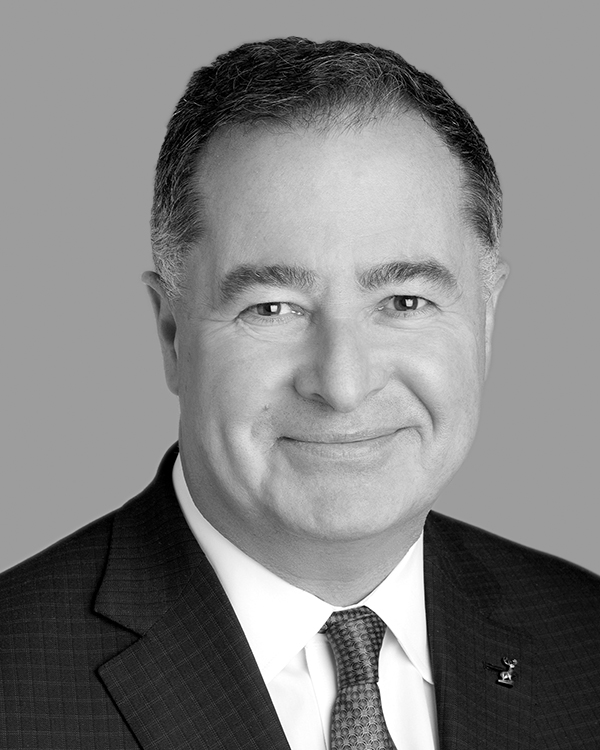 | |

| 28 | ||||||
| BOARD AND GOVERNANCE MATTERS | ||||||||
 | DONNA A. | |||||||||||||
Professional highlights: • Lardon & Associates, LLC –President and Chief Executive Officer (2006-present) • Nationwide Mutual Insurance and Financial Services –President, Nationwide Strategic Investments (2003-2006) –Positions of increasing responsibility, including Executive Vice President – Chief Administrative Officer; Co-President Shared Services; Executive Vice President Human Resource; and Vice President Office of the Chief Executive Officer (1993-2003) | Director since: 2021 Age: 63 Committees: • FIRMCo Other public company directorships: •Boston Scientific, Inc. (2015-present) •L Brands, Inc. (2003-present) •Marathon Petroleum (2011-2018) •Time Warner Cable (2009-2016) | |||||||||||||
| Skills and qualifications relevant to The Hartford: | ||||||||||||||
| Ms. James brings to the Board extensive insurance-industry experience in a range of functions, including accounting, investing, operations, treasury and human resources. She is president and CEO of Lardon & Associates, a business-advisory firm specializing in corporate governance, new business development, strategy, and financial and risk management. She had a 25-year career with Nationwide Mutual Insurance Company, culminating in the role of president of strategic investments. Before that, she held a variety of positions, including chief administrative officer, chief human resources officer, assistant to the CEO and director of operations and treasury services. Ms. James has significant corporate governance experience by virtue of her service on several major public company boards, including as audit committee chair. | ||||||||||||||
 | ||||||||||||||
Professional highlights: • Chief Financial Officer, Diageo plc (2015-present)* • Chief Financial Officer, Xerox Corporation (2013-2015) • Chief Financial Officer, ADT Security Services (2012-2013) • Chief Financial Officer, Nalco Company (2010-2011) • UAL Corporation (parent of United Airlines) –Chief Financial Officer, Executive Vice President (2008-2010) –Head of Investor Relations (2007-2008) –Vice President, Financial Planning and Analysis (2006-2007) –Treasurer (2005-2006) | Director since:2010 Committees: • Audit (Chair) • FIRMCo Other •Diageo plc (2015-present) | |||||||||||||
| Skills and | ||||||||||||||
| Ms. Mikells has extensive experience in a variety of executive management positions, with a focus on leading the finance function of global organizations. She has significant experience in corporate finance and financial reporting acquired through senior executive roles in finance, including as a chief financial officer of multiple | ||||||||||||||

| 2021 Proxy Statement | 29 | |||||||
 | ||||||||||||||
Professional highlights: • American Electric Power Company, Inc. – –Chairman, President and Chief Executive Officer (2004-2011) • Chairman, President and Chief Executive Officer, Northeast Utilities (1997-2003) | Director since: 2004 Committees: • Audit • FIRMCo • Nominating Other •Alcoa Corporation (2002-present) •American Electric Power Company, Inc. (2004-2014) •L Brands, Inc. (2012-present) • Spectra Energy Corp. (2013-2017) •Spectra Energy Partners GP, LLC | |||||||||||||
| Skills and | ||||||||||||||
| Mr. Morris has over two decades of experience as chief executive officer and president of multiple | ||||||||||||||

 | |

 | |

 | ||||||||||||||
Professional highlights: • Executive Vice President, General Counsel and Corporate Secretary, The Home Depot (2011-present) • Senior Chief Counsel Compliance & Litigation and Deputy General Counsel, MetLife, Inc. (2006-2011) • Partner, Sutherland, Asbill & Brennan LLP (1996-2006) • Deputy Assistant Attorney General, Office of Legal Counsel, U.S. Department of Justice (1994-1996) | Director since: 2015 Committees: • Compensation • FIRMCo • Nominating Other •None | |||||||||||||
| Skills and | ||||||||||||||
| Ms. Roseborough has over two decades of experience as a senior legal advisor in government, law firm and corporate settings. She has experience as a senior leader responsible for corporate compliance matters at | ||||||||||||||

| 30 | www.thehartford.com | ||||
| BOARD AND GOVERNANCE MATTERS | ||||||||
 | ||||||||||||||
Professional highlights: • Verizon Communications, Inc. –Executive Vice President (Jan. 2012-Jul. 2012) –President, Verizon Services Operations (2009-2011) –President, Verizon Telecom (2006-2008) –President, Verizon Partner Solutions (2005-2006) • Positions of increasing responsibility in operations, sales and customer service, New York Telephone (1984-2005) | Director since: 2013 Committees: • Compensation • FIRMCo • Nominating Other •Frontier CommunicationsCorporation (2013-2019) | |||||||||||||
| Skills and | ||||||||||||||
| Ms. Ruesterholz has held a variety of senior executive positions, including as Executive Vice President at Verizon Communications and President of the former Verizon Services Operations. As a senior leader of a Fortune 100 company, she has held principal oversight responsibility for key strategic initiatives, navigated the regulatory landscape of large-scale operations, and led an organization with over 25,000 employees. Ms. Ruesterholz | ||||||||||||||

 | ||||||||||||||
Professional highlights: • The Hartford Financial Services Group, Inc. –Chief Executive Officer (2014-present) –Executive Vice President and Chief Financial Officer (2010-2014) • Vice President and Chief Financial Officer, Life and Retirement Services, American International Group, Inc. (2003-2010) • Partner, KPMG, LLP (1999-2003) • Executive Vice President, Conning Asset Management, General American Life Insurance Company (1997-1999) • KPMG, LLP –Partner (1993-1997) –Auditor (1983-1993) | Director since: 2014 Committees: • FIRMCo Other | |||||||||||||
| Skills and | ||||||||||||||
| Mr. Swift has over 30 years of experience in the financial services industry, with a focus on insurance. As Chairman and CEO of The Hartford, he brings to the Board unique insight and knowledge into the complexities of our businesses, relationships, competitive and financial positions, senior leadership and strategic opportunities and challenges. Mr. Swift leads the execution of our strategy, directs capital management actions and strategic investments, and oversees the continuous strengthening of the company’s leadership pipeline. | ||||||||||||||

| 2021 Proxy Statement | 31 | |||||||
 | MATTHEW E. WINTER INDEPENDENT | |||||||||||||
Professional highlights: • The Allstate Corporation –President (2015-2018) –President, Allstate Personal Lines (2013-2015) –President and Chief Executive Officer, Allstate Financial (2009-2012) • American International Group, Inc. –Vice Chairman (Apr. 2009-Oct. 2009) –President and CEO, of AIG American General (2006-2009) • Massachusetts Mutual Life Insurance Company –Executive Vice President (2002-2006) –Positions of increasing responsibility (1996-2002) | Director since: 2020 Age: 64 Committees: • Compensation • FIRMCo Other public company directorships: •ADT Inc. (2018-present) •H&R Block, Inc. (2017-present) | |||||||||||||
| Skills and qualifications relevant to The Hartford: | ||||||||||||||
| As President of The Allstate Corporation, Mr. Winter oversaw the complete range of Allstate’s P&C and life insurance products and was responsible for business operations, including field offices located across the U.S. and in Canada, and distribution through Allstate and independent agencies. He brings to the Board significant expertise in areas relevant to our business, including operations, distribution and risk management, gained from over 25 years as a senior leader in the insurance industry. Before joining Allstate, Mr. Winter held numerous senior executive positions at large insurance providers, including as vice chairman of American International Group, where he was responsible for a number of business units with global reach; and executive vice president at Massachusetts Mutual Life Insurance Company, where he led the company's domestic insurance businesses. | ||||||||||||||
 | ||||||||||||||
Professional highlights: • Reinsurance Group of America –President and Chief Executive Officer (1993-2016) • General American Life Insurance Company –Executive Vice President (1992-1993) –Head of Reinsurance (1986-1992) –Positions of increasing responsibility (1979-1986) | Director since:2017 Committees: • Audit • FIRMCo Other •Reinsurance Group of America, Incorporated (1993-2016) •Sun Life Financial Inc. (Jan. - April 2017) | |||||||||||||
| Skills and | ||||||||||||||
| Mr. Woodring brings significant and valuable insurance industry and leadership experience to the Board, demonstrated by his more than two decades leading Reinsurance Group of America, Incorporated (RGA), a leading life reinsurer with global operations. During his tenure, RGA grew to become one of the world’s leading life reinsurers, with offices in 26 countries and annual revenues of more than $10 billion. Mr. Woodring has demonstrated skills in areas that are relevant to the oversight of the company, including risk management, finance, and operational expertise. Mr. Woodring serves as | ||||||||||||||

| 32 | ||||||
ITEM 2 | ||||||||||
RATIFICATION OF |  | |||||||||
In accordance with its Board-approved charter, the Audit Committee is directly responsible for the appointment, compensation, retention and oversight of the independent external audit firm retained to audit the company’s financial statements. The Audit Committee has appointed Deloitte & Touche LLP (“D&T”) as the company’s independent registered public accounting firm for the fiscal year ending December 31, In selecting D&T for fiscal year • • D&T’s depth of understanding of the company’s businesses, accounting policies and practices and internal control over financial reporting; • D&T’s quality controls and its processes for maintaining independence; • •D&T’s commitment to diversity & inclusion. The Audit Committee oversees and is ultimately responsible for the outcome of audit fee negotiations associated with the company’s retention of D&T. In addition, Although shareholder ratification of the appointment of D&T is not required, the Board requests ratification of this appointment by shareholders. If shareholders fail to ratify the selection, the Audit Committee will reconsider whether or not to retain D&T. Representatives of D&T will attend the Annual Meeting, will have the opportunity to make a statement if they desire to do so, and will be available to respond to appropriate questions. | ||||||||||
| ✓ | The Board recommends that shareholders vote “FOR” the ratification of the appointment of Deloitte & Touche LLP as our independent registered public accounting firm for the fiscal year ending December 31, 2021. | |||||||||
| Year Ended December 31, 2017 | Year Ended December 31, 2016 | Year Ended December 31, 2020 | Year Ended December 31, 2019 | |||||||||||||||
| Audit fees | $ | 13,881,000 | $ | 14,457,000 | Audit fees | $ | 11,151,000 | $ | 11,668,000 | |||||||||
Audit-related fees(1) | $ | 1,356,000 | $ | 591,000 | Audit-related fees(1) | $ | 1,099,000 | $ | 1,620,000 | |||||||||
Tax fees(2) | $ | 184,000 | $ | 474,000 | Tax fees(2) | $ | 102,000 | $ | 316,000 | |||||||||
All other fees(3) | $ | — | $ | 69,000 | All other fees(3) | $ | 35,000 | $ | 123,000 | |||||||||
| Total | $ | 15,421,000 | $ | 15,591,000 | Total | $ | 12,387,000 | $ | 13,727,000 | |||||||||
| 2021 Proxy Statement | 33 | |||||||
| AUDIT MATTERS | ||||||||
| 34 | ||||||
ITEM 3 | ||||||||||
ADVISORY APPROVAL OF |  | |||||||||
Section 14A of the Securities Exchange Act of 1934, as amended, provides our shareholders with the opportunity to vote to approve, on an advisory basis, the compensation of our NEOs as disclosed in this proxy statement in accordance with the rules of the SEC. We currently intend to hold these votes on an annual basis. As described in detail in the Compensation Discussion and Analysis beginning on page RESOLVED, that the shareholders approve, on an advisory basis, the compensation of the named executive officers, as disclosed pursuant to the compensation disclosure rules of the Securities and Exchange Commission, including the Compensation Discussion and Analysis, the compensation tables and the narrative discussion contained in this proxy statement. Because the required vote is advisory, it will not be binding upon the Board. The Compensation Committee will, however, take into account the outcome of the vote when considering future executive compensation arrangements. | ||||||||||
| ✓ | The Board recommends that shareholders vote “FOR” the above resolution to approve our compensation of named executive officers as disclosed in the Compensation Discussion and Analysis, the compensation tables and the narrative discussion contained in this proxy statement. | |||||||||
| 2021 Proxy Statement | ||||||||
| Name | Title | ||||
| Christopher Swift | Chairman and Chief Executive Officer | ||||
| Beth | Executive Vice President and Chief Financial Officer | ||||
| Douglas Elliot | President | ||||
| William Bloom | Executive Vice President, Claims, Operations, Technology and Data & Analytics | ||||
| David Robinson | Executive Vice President and General Counsel | ||||
| Brion Johnson | Former Executive Vice President and Chief Investment Officer; Former President of HIMCO | ||||

| 36 | www.thehartford.com | ||||
| NAVIGATING THE CHALLENGES AND OPPORTUNITIES OF 2020 | ||||||||||||
Ensuring Business Resiliency and Employee Health, Safety & Well-being • • | • • Offering Customer Support • | • • •Provided personal auto insurance customers a •Provided leniency in enforcement of certain policy provisions (e.g., claim notice requirements and vacancy provisions) Giving to Communities •Donated $1 million •Donated $1.5 million to aid in the recovery efforts to support U.S. small businesses – 50% of funding benefited diverse-owned businesses •Matched hospitals across the country with local restaurants to sponsor meals for their front-line workers •Supported more than 2,500 of our small business customers across the country by making multiple holiday shopping guides and an internal shopping directory available to our 18,500 employees •Live-streamed fire safety and prevention education to more than 51,000 students, educators and parents in 750 cities and towns across the country as part of The Hartford’s first-ever National Junior Fire Marshal Day •Provided adaptive fitness kits to 750 individualswith physical disabilities to enable exercise and physical activity at home Reinforcing our Support for Racial Equity •Utilized established courageous conversation framework and brand messaging to show support for our Black colleagues, educate all employees, and demonstrate our commitment to fighting bias and racism •Reaffirmed our ongoing support of vital Black institutions including the National Museum of African American History and Culture •Intensified CEO leadership internally through all-employee panel discussions and externally through the CEO Action for Diversity & Inclusion, the CEO Action for Racial Equity, and the Corporate Call to Action convened by the Connecticut State Treasurer •Fast tracked elements of our diversity and inclusion strategy, including adopting diversity and inclusion goals for each business and functional area, with progress considered as part of the leadership performance and compensation assessment processes •Released EEO-1 data at the end of the first quarter of 2021 | ||||||||||
| 2021 Proxy Statement | 37 | |||||||
| COMPENSATION MATTERS | ||||||||

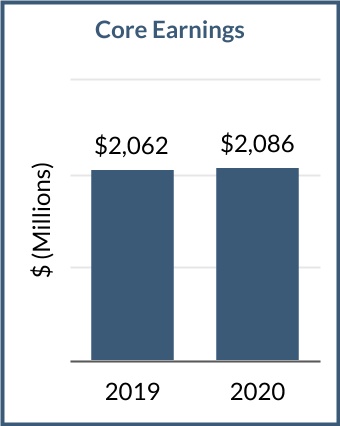
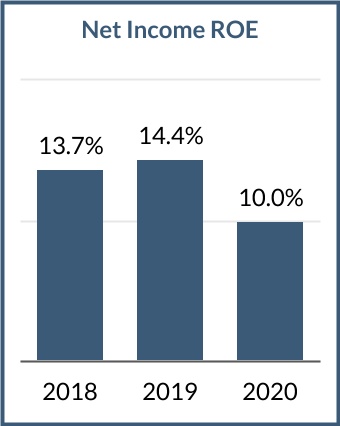

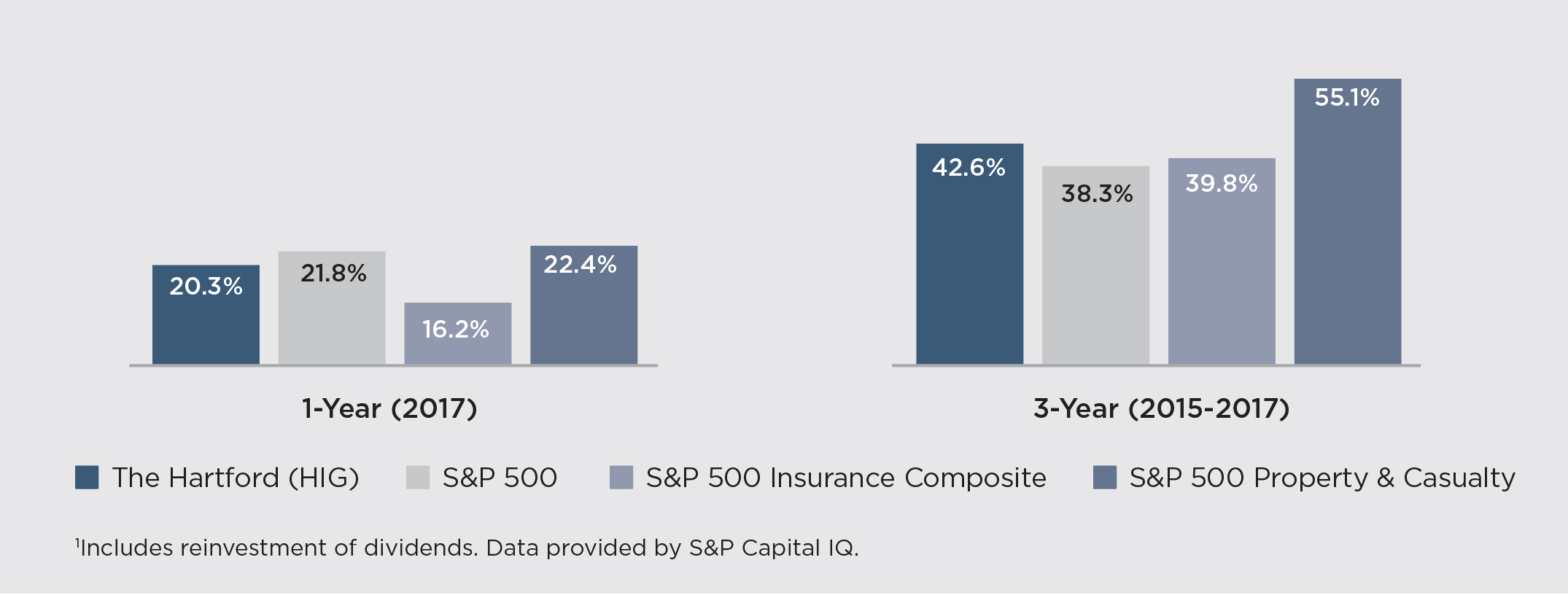 | |
| www.thehartford.com | |||||
| Compensation Component | C. Swift | B. Bombara | D. Elliot | B. Johnson | W. Bloom | ||||||||||||||
| Base Salary Rate | $ | 1,100,000 | $ | 700,000 | $ | 925,000 | $ | 525,000 | $ | 550,000 | |||||||||
| 2017 AIP Award | $ | 4,675,000 | $ | 1,900,000 | $ | 3,150,000 | $ | 2,300,000 | $ | 1,575,000 | |||||||||
| 2017 LTI Award | $ | 7,500,000 | $ | 1,750,000 | $ | 5,000,000 | $ | 1,500,000 | $ | 1,000,000 | |||||||||
| Total 2017 Compensation Package | $ | 13,275,000 | $ | 4,350,000 | $ | 9,075,000 | $ | 4,325,000 | $ | 3,125,000 | |||||||||
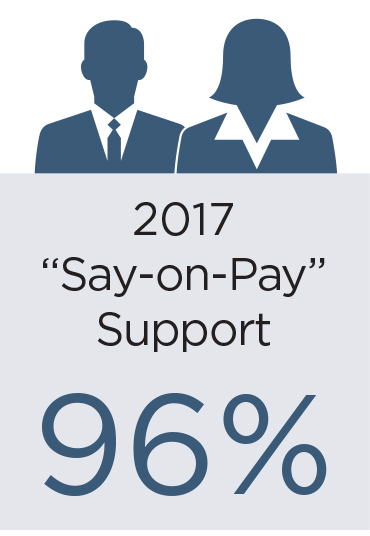 | ||
Commercial Lines | Personal Lines | Group Benefits | |||||||||||||||
Combined ratio(1) of 100.4 was above the outlook of 95.5 - 97.5 primarily due to $278 million, or 3.1 points, of COVID-19 incurred losses in property, workers’ compensation and financial and other lines, net of favorable frequency of non-COVID workers’ compensation claims. Higher than expected current accident year catastrophes was partly offset by lower than expected non-catastrophe property losses. Underlying combined ratio* of 95.5, which excludes catastrophes and prior year development, was also above outlook of 92.0 - 94.0 because of the COVID-19 incurred losses, partly offset by lower than expected non-catastrophe property losses. | |||||||||||||||||
Combined ratio of Underlying combined ratio of | Net income margin of 6.4% was within the target range of 6.25% - 7.25% due to favorable development on prior incurral year disability claims and net realized capital gains, largely offset by higher than expected mortality in group life due to the | ||||||||||||||||
Core earnings margin* of 6.4% was lower than outlook of 6.5% - 7.5% primarily due to the higher than expected mortality in group life, partially offset by favorable development on prior incurral year disability claims, driven by higher than expected recoveries and lower than expected incidence on prior incurral year disability claims. | |||||||||||||||||

| 2021 Proxy Statement | 39 | |||||||
| COMPENSATION MATTERS | ||||||||
| Compensation Component | Description | ||||
| Base Salary | •Fixed level of cash compensation based on market data, internal pay equity, experience, responsibility, expertise and performance. | ||||
| Annual Incentive Plan | •Variable cash award based primarily on annual company operating performance against a predetermined financial target and achievement of individual performance goals aligned with the company's strategic priorities. | ||||
| Long-Term Incentive Plan | •Variable awards granted based on individual performance, potential and market data. •Designed to drive long-term performance, align senior executive interests with shareholders, and foster retention. •Award mix (50% performance shares and 50% stock options) reflects stock price performance, peer-relative shareholder returns (stock price and dividends) and operating performance. | ||||
| Target Pay Mix — CEO | |||||||||||||||||||||||||||||||||||||||||||||||||||||||||||||||||||||||||||||||||||||||||||||||||||||||||||||||||||||||||||||||||||||||||||||||||||||||||||||||||||||||||||||||||||||||||||||||||||||||||||||||||||||||||||||||||||||||||||||||||||||||||||||||||||||||||||||||||||||||||||||||||||||||||||||||||||||||||||||||||||||||||||||||||||||||||||||||||||||||||||||||||||||||||||||||||||||||||||||||||||||||||||||||||||||||||||||||||||||||||||||||||||||||||||||||||||||||||||||||||||||||||||||||||||||||||||||||||||||||||||||||||||||||||||||||||||||||||||||||||||||||||||||||||||||||||||||||||||||||||||||||||||||||||||||||||||||||||||||||||||||||||||||||||||||||||||||||||||||||||||||||||||||||||||||||||||||||||||||||||||||||||||||||||||||||||||||||||||||||||||||||||||||||||||||||||||||||||||||||||||||||||||||||||||||||||||||||||||||||||||||||||||||||||||||||||||||||||||||||||||||||||||||||||||||||||||||||||||||||||||||||||||||||||||||||||||||||||||||||||||||||||||||||||||||||||||||||||||||||
Salary
2020 COMPENSATION DECISIONS
The Compensation Committee (and, in the case of the CEO, the independent directors) approved the following compensation for each active NEO:
*Mr. Robinson was not previously an NEO. This table provides a concise picture of compensation decisions made in 2020, and highlights changes from 2019. In each case, Total 2020 Compensation was lower than 2019 compensation due to the lower AIP awards for 2020. Another view of 2020 compensation for the NEOs is available in the Summary Compensation Table on page 55. COMPENSATION BEST PRACTICES Our current compensation best practices include the following:
* Double-trigger vesting for equity awards applies if the awards are assumed or replaced with substantially equivalent awards.
SAY-ON-PAY RESULTS At our 2020 annual meeting, we received 96% support on Say-on-Pay. The Compensation Committee considered the vote to be an endorsement of The Hartford’s executive compensation programs and policies, and recent program changes. They took this strong level of support into account in their ongoing review of those programs and policies. Management also discussed the vote, along with aspects of its executive compensation, diversity and inclusion and corporate governance practices, during our annual shareholder outreach program to gain a deeper understanding of shareholders’ perspectives. Feedback regarding the compensation program was generally positive, with many shareholders expressing support for the Compensation Committee's changes to the payout curves for 2020 AIP and 2020-2022 performance share awards. For further discussion of our shareholder outreach program, see pages 20-21.
COMPONENTS OF THE COMPENSATION PROGRAM Each Senior Executive has a target total compensation opportunity comprised of both fixed (base salary) and variable (annual and long-term 1. BASE SALARY Each Senior Executive’s base salary is reviewed by the Compensation Committee (in the case of the CEO, the independent directors) annually, upon promotion, or following a change in job 2. ANNUAL INCENTIVE PLAN AWARDS Our employees, including the Senior Executives, are eligible to earn cash awards Determination of AIP Funding Level At the beginning of the year, the Compensation Committee set a “Compensation Core Earnings” target based on The Hartford’s operating plan, as well as the threshold performance level, below which no AIP awards are The Compensation Committee selected core earnings because: Certain adjustments are made to core earnings for compensation purposes to ensure
To ensure a holistic review of performance, the Compensation Committee also considers a number of qualitative factors,
Actual Compensation Core Earnings for 2020 were $1.77 billion, which produced a formulaic AIP funding level of 80% of target, with below target performance primarily related to COVID-19. In assessing overall performance and arriving at the 2020 AIP funding level, the Compensation Committee started with the formulaic AIP funding level and undertook a qualitative review focused on the factors described on the following page. While the Compensation Committee acknowledged the strong financial results and strategic accomplishments achieved during an extraordinarily difficult year, in light of the impact of COVID-19 on our businesses and customers, it concluded that no adjustment was necessary to the formulaic AIP funding level of 80% of target.
2021 AIP Curve The Compensation Committee
The AIP funding level multiplied by 3. LONG-TERM INCENTIVE AWARDS 2020-2022 Performance Shares (50% of LTI Award) Performance shares are designed to reward and retain Senior Executives by allowing them to earn shares of our common stock based on pre-determined performance criteria. Performance shares have a three-year performance period, and are settled in shares of common stock ranging from 0% to 200% of the number of performance shares granted depending upon the performance achieved on the following metrics:
Compensation Core ROE: For 50% of the performance share award, payouts at the end of the performance period, if any, will depend upon achieving a target average annual
Peer-Relative TSR: For 50% of the performance share award, payouts, For each company in the Performance Peer Group, TSR will be measured using a 20-day stock price average at the beginning and the end of the performance period in order to smooth out any volatility.
Committee updated the TSR payout curve for performance share awards granted in
Stock Options (50% of LTI Awards) The use of stock options directly aligns the interests of our Senior Executives with those of shareholders because options only have value if the price of our common stock on the exercise date exceeds the stock price on the grant date. The stock options are granted at fair market value, vest in three equal installments over three years, and have a 10-year term. In 2020, to ensure that executives whose employment terminates due to retirement, death or disability have the opportunity to participate in the long-term impact of their actions on the company’s stock price, the Compensation Committee decided to extend the post-employment exercise period applicable in the event of any such termination for all outstanding stock options, including those granted in 2020, to the remainder of the option’s originally stated term. Certification of 2018-2020 Performance Share Awards On February 27, 2018, the Compensation Committee granted Senior Executives performance shares tied 50% to achievement of average annual Compensation Core ROE goals over a three-year measurement period, and 50% to TSR performance relative to a peer group of 16 companies.(1) For the Core ROE component of the award, achievement of average annual Compensation Core ROE of 9.3%, 11.6% and 13.9% during the measurement period would have resulted in payouts of 35%, 100% and 200% of target, respectively. For the TSR component of the award, there would be no payout for performance below the 30th percentile, 35% payout for performance at the 30th percentile, target payout for median performance, and 200% payout for performance at the 85th percentile. These performance shares vested as of December 31, 2020, the end of the three-year performance period, and the Compensation Committee certified a payout at 75% of target on February 17, 2021 based on the following results: •The average of the company's Compensation Core ROE for each year of the measurement period was 12.8%, resulting in a payout of 151% of target for the Compensation Core ROE component of the awards. •Because the company’s TSR during the performance period was below threshold, there was no payout for the TSR component of the awards. Details of the 2018 performance shares are given on pages 41-43 of our 2019 Proxy Statement filed with the Securities and Exchange Commission on April 4, 2019. Diversity Modifier for 2021-2023 Performance Shares The Compensation Committee updated the 2021 LTI program to include a performance share modifier tied to the company's diversity and workforce representation goals. The modifier will determine whether an increase or decrease of 10% on performance share awards is warranted based upon performance against predetermined year-end 2023 representation goals for women and people of color. This change will be described in greater detail in our 2022 proxy statement. Representation goals for women and people of color will be described in our forthcoming Sustainability Highlight Report. (1) While the peer group at the time of the grant consisted of 17 companies, AXA subsequently acquired XL Group plc, resulting in a performance peer group of 16 companies for measuring TSR performance.
EXECUTIVE BENEFITS AND PERQUISITES Senior Executives are eligible for the same benefits as full-time employees generally, including health, life insurance, disability and retirement benefits. Non-qualified savings and retirement plans provide benefits that would otherwise be provided but for the Internal Revenue Code limits that apply to tax-qualified benefit plans. We provide certain additional perquisites to Senior Executives, including reimbursement of costs for annual physicals and associated travel, relocation benefits when a move is required, and occasional use of tickets for sporting and special events previously acquired by the company when no other business use has been arranged and there is no incremental cost to the company. The CEO also has the use of a company car and driver to allow for greater efficiency while commuting. We own a fractional interest in a corporate aircraft to allow Senior Executives to safely and efficiently travel for business purposes. The corporate aircraft enables Senior Executives to use travel time productively by providing a confidential environment in which to conduct business and eliminating the schedule constraints imposed by commercial airline service. From time to time, a Senior Executive’s expenses for a purpose deemed important to the business may not be considered “directly and integrally related” to the performance of the Senior Executive’s duties as required by applicable SEC rules. These expenses are considered perquisites for disclosure purposes. Examples of such expenses may include attendance at conferences, seminars or award ceremonies, as well as attendance of a Senior Executive’s spouse or guest at business events or dinners where spousal or guest attendance is expected. Whenever required to do so under Internal Revenue Service regulations, we attribute income to Senior Executives for perquisites and the Senior Executive is responsible for the associated tax obligation. 2020 NAMED EXECUTIVE OFFICERS' COMPENSATION AND PERFORMANCE In evaluating individual performance, the Compensation Committee considered each NEO's achievements to advance the company's position in our strategic priorities of realizing the full potential of our product capabilities and underwriting expertise, becoming an easier company to do business with, and attracting, retaining and developing the talent needed for long-term success. CHRISTOPHER SWIFT Chairman and Chief Executive Officer Mr. Swift has served as CEO since July 1, 2014; he was also appointed Chairman on January 5, 2015. As CEO, he is responsible for the company’s strategy and growth, capital allocation, performance, culture and leadership. 2020 Performance In reviewing Mr. Swift’s performance, the independent directors took into account that Mr. Swift led the company’s response to the COVID-19 pandemic and racial inequity including: additional benefits and support for employees (e.g., free COVID-19 testing and remote work support); enhanced community giving; all-employee panel discussions on racial equity; support for CEO Action for Diversity & Inclusion, the CEO Action for Racial Equity and the Corporate Call to Action convened by the Connecticut State Treasurer; and adoption of diversity and inclusion goals for each business and functional area. In addition, under Mr. Swift’s leadership, the company: •Achieved strong underlying financial results, despite unprecedented challenges of 2020, delivering core earnings of $2.086 billion. •Executed key strategic priorities including the Navigators Group integration, the launch of our next-generation Spectrum package offering for small businesses and the extension of our AARP relationship through 2032. •Maintained top decile employee engagement and performance enablement scores as measured by Qualtrics Experience Management (XM) survey through continued focus on talent management and diversity and inclusion.
BETH COSTELLO Executive Vice President and Chief Financial Officer Ms. Costello has served as CFO since July 1, 2014. As the company’s CFO, Ms. Costello is responsible for finance, treasury, capital, accounting, investor relations and procurement. 2020 Performance In reviewing Ms. Costello’s performance, the Compensation Committee took into account that she: •Delivered a capital management plan that included a $1.5 billion equity repurchase authorization through 2022 and an 8% increase in our common stock dividend. •Launched a multi-year strategic cost management initiative, “Hartford Next” with run-rate savings on target and 2020 core earnings impact ahead of plan. •Strengthened organizational talent through key internal moves while maintaining top decile employee engagement and enablement scores as measured by Qualtrics Experience Management (XM) survey. In addition, the Compensation Committee noted that under her financial leadership the company received the highest evaluation score of “Superior” in S&P’s enterprise risk management evaluation framework and A.M. Best raised its financial strength rating on Hartford Life and Accident Insurance Company to A+ from A.
DOUGLAS ELLIOT President Mr. Elliot has served as President of The Hartford since July 1, 2014. He leads the company’s Property & Casualty business lines (Small Commercial, Middle & Large Commercial, Personal Lines and Global Specialty) as well as Underwriting. 2020 Performance In reviewing Mr. Elliot’s performance, the Compensation Committee took into account that he: •Delivered strong P&C core earnings, despite unprecedented challenges in 2020, highlighted by a strong P&C combined ratio excluding catastrophes and prior year development. •Continued to lead the Navigators Group integration, with excellent results on re-underwriting the Middle & Large Commercial and Global Specialty books of business, cross-sell initiatives and pricing. •Oversaw the extension of our AARP relationship through 2032 and led execution of Personal Lines' investment in a new technology platform to improve pricing accuracy, increase conversions and simplify and streamline the customer experience. •Continued focus on talent management and maintained top decile employee engagement and enablement scores as measured by Qualtrics Experience Management (XM) survey.
WILLIAM BLOOM Executive Vice President, Claims, Operations, Technology, and Data & Analytics Mr. Bloom has served as Executive Vice President since July 1, 2014. He is responsible for The Hartford's s technology and service operations, as well as oversight of data and analytics initiatives. In 2020, he also assumed leadership of the company's claims organization. 2020 Performance In reviewing Mr. Bloom’s performance, the Compensation Committee took into account that he: •Led initiatives that enabled the company to transition its workforce to nearly all-remote status in light of the COVID-19 pandemic, implemented COVID-related billing holds and other customer accommodations, and redeployed talent to meet changing customer needs. •Delivered on digital investments that allowed for improved digital adoption in both Small Commercial and Personal Lines, leading to higher net promoter scores. •Renegotiated several large vendor contracts resulting in significant annual savings and improved vendor capabilities. •Strengthened organizational talent through key internal moves while maintaining top decile employee engagement and enablement scores as measured by Qualtrics Experience Management (XM) survey.
DAVID ROBINSON Executive Vice President and General Counsel Mr. Robinson has served as Executive Vice President and General Counsel since June 1, 2015. He is responsible for The Hartford's law department, government affairs and compliance. 2020 Performance In reviewing Mr. Robinson’s performance, the Compensation Committee took into account that he: •Led law, compliance and government affairs' COVID-19 response, including responding to an unprecedented level of legislative and regulatory activity and advising on numerous novel business and coverage challenges. •Led the successful transition to a virtual Board environment, including increased engagement between management and the Board, an increase in the Board's regular meeting cadence, the onboarding of two new directors and the company's first virtual annual meeting of shareholders. •Led the enhancement of the law department's operating model in support of the claims organization, yielding savings on outside counsel expense. •Strengthened organizational talent through key internal moves while maintaining top decile employee engagement and enablement scores as measured by Qualtrics Experience Management (XM) survey.
BRION JOHNSON Former Executive Vice President and Chief Investment Officer; Former President of HIMCO Mr. Johnson served as Chief Investment Officer and President of Hartford Investment Management Company ("HIMCO") from May 16, 2012 until August 1, 2020, and continued as an employee of the company in an advisory capacity until his retirement on December 31, 2020.
PROCESS FOR DETERMINING SENIOR EXECUTIVE COMPENSATION (INCLUDING NEOs) COMPENSATION COMMITTEE The Compensation Committee is responsible for reviewing the performance of and approving compensation awarded to those executives who either report to the CEO or who are subject to the filing requirements of Section 16 of the Securities Exchange Act of 1934 (other than the CEO). The Compensation Committee also evaluates the CEO’s performance and recommends his compensation for approval by the independent directors. With this input from the Compensation Committee, the independent directors review the CEO’s performance and determine his compensation level in the context of the established goals and objectives for the enterprise and his individual performance. The Compensation Committee and the independent directors typically review performance and approve annual incentive awards for the prior fiscal year at their February meeting, along with annual LTI awards and any changes to base salary and target bonus. To assist in this process, the Compensation Committee reviews
COMPENSATION CONSULTANT Meridian Compensation Partners, LLP ("Meridian") is the Compensation Committee’s independent compensation consultant and has regularly attended Compensation Committee meetings since its engagement. Pursuant to the Compensation Committee's charter, Meridian has not provided services to the company other than consulting services provided to the Compensation Committee and, with respect to CEO and director compensation, the Board. In ROLE OF MANAGEMENT Our Human Resources team supports the Compensation Committee in the execution of its responsibilities.
compensation recommendations for consideration by the Compensation BENCHMARKING On an annual basis, the Compensation Committee reviews and considers a number of factors in establishing or recommending a target total compensation opportunity for each individual including, but not limited to, market data, tenure in position, experience, sustained performance, and internal pay equity. Although the Compensation Committee The Compensation Committee reviews the peer group used for compensation benchmarking (the "Corporate Peer Group") periodically or upon a significant change in business conditions for the company or its peers. As part of its review, the Compensation Committee considers many factors, including market capitalization, revenues, assets, lines of business and sources and destinations of talent. Data in millions – as of 12/31/
(1)Data provided by S&P Global Market Intelligence. The amounts shown in the “Revenues” column reflect adjustments to facilitate comparability across companies. (2)An additional four non-public companies are included in the Corporate Peer Group as they submit data to relevant compensation surveys utilized in determining appropriate pay levels for Senior Executives: Liberty Mutual, MassMutual, Nationwide Financial, and State Farm. Use of Corporate Peer Group Compensation Data When evaluating and determining individual pay levels, the Compensation Committee reviews compensation data prepared annually by Aon The Compensation Committee also reviews general industry survey data published by third parties as a general indicator of relevant market conditions and pay practices, including perquisites. Neither the Compensation Committee nor management has any input into companies included in these general industry or financial services company surveys.
COMPENSATION POLICIES AND PRACTICES STOCK OWNERSHIP AND RETENTION GUIDELINES Senior Executives are expected to meet or exceed certain levels of stock ownership to align their interests with those of shareholders. The Compensation Committee has established the following ownership guidelines for the CEO and other NEOs
The Compensation Committee reviews ownership levels annually. NEOs are generally expected to meet these ownership guidelines within five years of appointment to position. As of March TIMING OF EQUITY GRANTS Equity grants may be awarded four times per year, on the first day of a quarterly trading window following the filing of our Form 10-Q or 10-K for the prior period. Our practice is to grant annual equity awards during the first quarterly trading window of the year. This timing ensures that grants are made at a time when the stock price reflects the most current public data regarding our performance and financial RECOUPMENT POLICY We have a recoupment policy that allows for the recoupment of any incentive compensation (cash or equity) paid or payable at any time to the extent such recoupment either (i) is required by applicable law or listing standards, or (ii) is determined RISK MITIGATION IN PLAN DESIGN Management has concluded that our compensation policies and practices are not reasonably likely to have a material adverse effect on the company. Our Enterprise Risk Management function performs a risk review of any new incentive compensation plans or any material changes to existing plans annually and The following features of our executive compensation program guard against excessive risk-taking:
HEDGING AND PLEDGING COMPANY SECURITIES We prohibit our employees and directors from engaging in hedging, monetization, derivative and similar transactions involving company securities. In addition, Senior Executives are prohibited from pledging company securities.
POTENTIAL SEVERANCE AND CHANGE OF CONTROL PAYMENTS The company does not have individual employment agreements. NEOs are covered under a The company maintains change of control benefits to ensure continuity of management and to permit executives to focus on their responsibilities without undue distraction related to concerns about personal financial security if the company is confronted with a contest for control. These benefits are also designed to ensure that in any such contest, management is not influenced by events that could occur following a change of control. The 2014 Incentive Stock Plan provides for “double trigger” vesting on a change of control. If an NEO terminates employment for “Good Reason” or EFFECT OF TAX AND ACCOUNTING CONSIDERATIONS ON COMPENSATION DESIGN In designing our compensation programs, we consider the tax and accounting impact of our decisions. In doing so, we strive to strike a balance between designing appropriate and competitive compensation programs for our executives, maximizing the deductibility of such compensation, and, to the extent reasonably possible, avoiding adverse accounting effects and ensuring that any accounting consequences are appropriately reflected in our financial statements. deferred compensation, and Sections 280G and 4999 of the Internal Revenue Code, which affect the deductibility of, and impose certain additional excise taxes on, certain payments that are made upon or in connection with a change of control. COMPENSATION AND MANAGEMENT DEVELOPMENT COMMITTEE INTERLOCKS AND INSIDER PARTICIPATION As of the date of this proxy statement, the Compensation and Management Development Committee consists of directors Ruesterholz (Chair), Dominguez, Fetter, REPORT OF THE COMPENSATION AND MANAGEMENT DEVELOPMENT COMMITTEE The Compensation Committee has reviewed and discussed the Report submitted as of March Members of the Compensation and Management Development Committee: Virginia P. Ruesterholz, Chair Carlos Dominguez Trevor Fetter Teresa W. Roseborough Matthew E. Winter
EXECUTIVE COMPENSATION TABLES SUMMARY COMPENSATION TABLE The table below reflects total compensation paid to or earned by each NEO.
To determine the fair value of the 2020 performance share award The number of shares payable under these awards will be based on the actual results as compared to pre-established performance conditions and can range from 0-200% of the target award. The value of performance shares assuming the highest possible
Under the 2014 Incentive Stock
(2)This column reflects the full aggregate grant date fair value for the fiscal years ended December 31, 2020, 2019 and 2018 calculated in accordance with FASB ASC Topic 718. The amounts in this column are not reduced for estimated forfeitures during the applicable vesting periods. Other assumptions used in the calculation of these amounts are included in footnote 20 of the company's Annual Report on Form 10-K for 2020 and footnote 19 of the company's Annual Reports on Form 10-K for 2019 and 2018. (3)This column reflects cash AIP awards paid for the respective years. (4)This column reflects the actuarial increase, if any, in the present value of the accumulated benefits of the NEOs under all pension plans established by the company. The amounts were calculated using discount rate and form of payment assumptions consistent with those used in the company’s GAAP financial statements. Actuarial assumptions for 2020 are described in further detail in footnote 2 of the Pension Benefits Table on page 60. (5)This column reflects amounts described in the Summary Compensation Table—All Other Compensation. | |||||||||||||||||||||||||||||||||||||||||||||||||||||||||||||||||||||||||||||||||||||||||||||||||||||||||||||||||||||||||||||||||||||||||||||||||||||||||||||||||||||||||||||||||||||||||||||||||||||||||||||||||||||||||||||||||||||||||||||||||||||||||||||||||||||||||||||||||||||||||||||||||||||||||||||||||||||||||||||||||||||||||||||||||||||||||||||||||||||||||||||||||||||||||||||||||||||||||||||||||||||||||||||||||||||||||||||||||||||||||||||||||||||||||||||||||||||||||||||||||||||||||||||||||||||||||||||||||||||||||||||||||||||||||||||||||||||||||||||||||||||||||||||||||||||||||||||||||||||||||||||||||||||||||||||||||||||||||||||||||||||||||||||||||||||||||||||||||||||||||||||||||||||||||||||||||||||||||||||||||||||||||||||||||||||||||||||||||||||||||||||||||||||||||||||||||||||||||||||||||||||||||||||||||||||||||||||||||||||||||||||||||||||||||||||||||||||||||||||||||||||||||||||||||||||||||||||||||||||||||||||||||||||||||||||||||||||||||||||||||||||||||||||||||||||||||||||||||||||||
| Name | Year | Perquisites ($)(1) | Contributions or Other Allocations to Defined Contribution Plans ($)(2) | Total ($) | ||||||||||||||||||||||
| Christopher Swift | 2020 | 165,821 | 65,700 | 231,521 | ||||||||||||||||||||||
| Beth Costello | 2020 | — | 65,700 | 65,700 | ||||||||||||||||||||||
| Douglas Elliot | 2020 | — | 65,700 | 65,700 | ||||||||||||||||||||||
| William Bloom | 2020 | — | 65,700 | 65,700 | ||||||||||||||||||||||
| David Robinson | 2020 | — | 54,350 | 54,350 | ||||||||||||||||||||||
| Brion Johnson | 2020 | — | 65,700 | 65,700 | ||||||||||||||||||||||
| Name | Year | Perquisites ($) | Contributions or Other Allocations to Defined Contribution Plans ($)(1) | Total ($) | |||||||
| Christopher Swift | 2017 | 18,038 | (2) | 65,367 | 83,405 | ||||||
| Beth Bombara | 2017 | — | 65,400 | 65,400 | |||||||
| Douglas Elliot | 2017 | 2,126 | (3) | 65,400 | 67,526 | ||||||
| Brion Johnson | 2017 | 2,750 | (4) | 65,400 | 68,150 | ||||||
| William Bloom | 2017 | 2,445 | (5) | 65,400 | 67,845 | ||||||
| Robert Rupp | 2017 | — | 65,400 | 65,400 | |||||||
(2)This column represents company contributions under the company’s tax-qualified 401(k) plan (The Hartford Investment and Savings Plan) and The Hartford Excess Savings Plan (the “Excess Savings Plan”), a non-qualified plan established to “mirror” the qualified plan to facilitate deferral of amounts that cannot be deferred under the 401(k) plan due to Internal Revenue Code limits. Additional information can be found under the “Excess Savings Plan” section of theNon-Qualified Deferred Compensation Table beginning on page 62. |
| 56 | ||||||
| COMPENSATION MATTERS | ||||||||
| Name | Plan | Grant Date | Estimated Future Payouts Under Non-Equity Incentive Plan Awards(1) | Estimated Future Payouts Under Equity Incentive Plan Awards(2) | All Other Stock Awards: Number of Shares of Stock or Units (#) | All Other Option Awards: Number of Securities Underlying Options (#)(3) | Exercise or Base Price of Option Awards ($/Sh) | Grant Date Fair Value of Stock and Option Awards ($)(4) | |||||||||||||||||||||||||||||||||||||||||||||||||||||||||||||||
| Threshold ($) | Target ($) | Maximum ($) | Threshold (#) | Target (#) | Maximum (#) | ||||||||||||||||||||||||||||||||||||||||||||||||||||||||||||||||||
| C. Swift | 2020 AIP | 1,050,000 | 3,000,000 | 9,000,000 | |||||||||||||||||||||||||||||||||||||||||||||||||||||||||||||||||||
| Stock Options | 2/25/2020 | 327,679 | 55.27 | 4,250,000 | |||||||||||||||||||||||||||||||||||||||||||||||||||||||||||||||||||
| Performance Shares | 2/25/2020 | 13,457 | 76,895 | 153,790 | 3,740,850 | ||||||||||||||||||||||||||||||||||||||||||||||||||||||||||||||||||
| B. Costello | 2020 AIP | 437,500 | 1,250,000 | 3,750,000 | |||||||||||||||||||||||||||||||||||||||||||||||||||||||||||||||||||
| Stock Options | 2/25/2020 | 71,318 | 55.27 | 925,000 | |||||||||||||||||||||||||||||||||||||||||||||||||||||||||||||||||||
| Performance Shares | 2/25/2020 | 2,929 | 16,736 | 33,472 | 814,185 | ||||||||||||||||||||||||||||||||||||||||||||||||||||||||||||||||||
| D. Elliot | 2020 AIP | 665,000 | 1,900,000 | 5,700,000 | |||||||||||||||||||||||||||||||||||||||||||||||||||||||||||||||||||
| Stock Options | 2/25/2020 | 204,703 | 55.27 | 2,655,000 | |||||||||||||||||||||||||||||||||||||||||||||||||||||||||||||||||||
| Performance Shares | 2/25/2020 | 8,406 | 48,037 | 96,074 | 2,336,931 | ||||||||||||||||||||||||||||||||||||||||||||||||||||||||||||||||||
| W. Bloom | 2020 AIP | 350,000 | 1,000,000 | 3,000,000 | |||||||||||||||||||||||||||||||||||||||||||||||||||||||||||||||||||
| Stock Options | 2/25/2020 | 50,116 | 55.27 | 650,000 | |||||||||||||||||||||||||||||||||||||||||||||||||||||||||||||||||||
| Performance Shares | 2/25/2020 | 2,058 | 11,760 | 23,521 | 572,130 | ||||||||||||||||||||||||||||||||||||||||||||||||||||||||||||||||||
| D. Robinson | 2020 AIP | 253,750 | 725,000 | 2,175,000 | |||||||||||||||||||||||||||||||||||||||||||||||||||||||||||||||||||
| Stock Options | 2/25/2020 | 50,116 | 55.27 | 650,000 | |||||||||||||||||||||||||||||||||||||||||||||||||||||||||||||||||||
| Performance Shares | 2/25/2020 | 2,058 | 11,760 | 23,521 | 572,130 | ||||||||||||||||||||||||||||||||||||||||||||||||||||||||||||||||||
| B. Johnson | 2020 AIP | 490,000 | 1,400,000 | 4,200,000 | |||||||||||||||||||||||||||||||||||||||||||||||||||||||||||||||||||
| Stock Options | 2/25/2020 | 67,463 | 55.27 | 875,000 | |||||||||||||||||||||||||||||||||||||||||||||||||||||||||||||||||||
| Performance Shares | 2/25/2020 | 2,770 | 15,831 | 31,663 | 770,175 | ||||||||||||||||||||||||||||||||||||||||||||||||||||||||||||||||||
| Name | Plan | Grant Date | Estimated Future Payouts Under Non-Equity Incentive Plan Awards(1) | Estimated Future Payouts Under Equity Incentive Plan Awards(2) | All Other Stock Awards: Number of Shares of Stock or Units (#) | All Other Option Awards: Number of Securities Underlying Options (#)(3) | Exercise or Base Price of Option Awards ($/Sh) | Grant Date Fair Value of Stock and Option Awards ($)(4) | ||||||||||||||||||||||||
Threshold ($) | Target ($) | Maximum ($) | Threshold (#) | Target (#) | Maximum (#) | |||||||||||||||||||||||||||
| C. Swift | 2017 AIP | 1,375,000 | 2,750,000 | 5,000,000 | ||||||||||||||||||||||||||||
| Stock Options | 2/28/2017 | 302,908 | 48.89 | 3,750,000 | ||||||||||||||||||||||||||||
Performance Shares | 2/28/2017 | 13,423 | 76,703 | 153,406 | 3,472,500 | |||||||||||||||||||||||||||
| B. Bombara | 2017 AIP | 550,000 | 1,100,000 | 2,200,000 | ||||||||||||||||||||||||||||
| Stock Options | 2/28/2017 | 70,679 | 48.89 | 875,000 | ||||||||||||||||||||||||||||
Performance Shares | 2/28/2017 | 3,132 | 17,897 | 35,794 | 810,250 | |||||||||||||||||||||||||||
| D. Elliot | 2017 AIP | 925,000 | 1,850,000 | 3,700,000 | ||||||||||||||||||||||||||||
| Stock Options | 2/28/2017 | 201,939 | 48.89 | 2,500,000 | ||||||||||||||||||||||||||||
Performance Shares | 2/28/2017 | 8,949 | 51,135 | 102,270 | 2,315,000 | |||||||||||||||||||||||||||
| B. Johnson | 2017 AIP | 675,000 | 1,350,000 | 2,700,000 | ||||||||||||||||||||||||||||
| Stock Options | 2/28/2017 | 60,582 | 48.89 | 750,000 | ||||||||||||||||||||||||||||
Performance Shares | 2/28/2017 | 2,685 | 15,341 | 30,682 | 694,500 | |||||||||||||||||||||||||||
| W. Bloom | 2017 AIP | 400,000 | 800,000 | 1,600,000 | ||||||||||||||||||||||||||||
| Stock Options | 2/28/2017 | 40,388 | 48.89 | 500,000 | ||||||||||||||||||||||||||||
Performance Shares | 2/28/2017 | 1,790 | 10,227 | 20,454 | 463,000 | |||||||||||||||||||||||||||
| R. Rupp | 2017 AIP | 600,000 | 1,200,000 | 2,400,000 | ||||||||||||||||||||||||||||
| Stock Options | 2/28/2017 | 56,543 | 48.89 | 700,000 | ||||||||||||||||||||||||||||
Performance Shares | 2/28/2017 | 2,506 | 14,318 | 28,636 | 648,200 | |||||||||||||||||||||||||||
(2)The performance shares granted to the NEOs on February 25, 2020 vest on December 31, 2022, the end of the three year performance period. The vesting percentage is based on the company’s TSR performance relative to a peer group established by the Compensation Committee, and performance based on pre-established ROE targets. These two measures are weighted equally (50/50), as described on page 45. The “Threshold” column for this grant represents 17.5% of target which is the payout for achieving the minimum level of performance under either of the two applicable performance measures for which an amount is payable under the program (no amount is payable if this level of performance is not reached). The “Maximum” column for this grant represents 200% of target and is the maximum amount payable. (3)The options granted in 2020 to purchase shares of the company's common stock vest 1/3 per year on each anniversary of the grant date and each option has an exercise price equal to the fair market value of one share of common stock on the grant date. The value of each stock option award is $12.97 and was determined by using a lattice/Monte-Carlo based option valuation model; this value was not reduced to reflect estimated forfeitures during the vesting period. (4)The NYSE closing price per share of the company’s common stock on February 25, 2020, the date of the 2020 LTI grants for the NEOs, was $55.27. To determine the fair value of the performance share award under FASB ASC Topic 718, the market value on the grant date is adjusted by a factor of 0.8802 to reflect the |
| 2021 Proxy Statement | 57 | |||||||
| COMPENSATION MATTERS | ||||||||
| Name | Option Awards | Stock Awards | |||||||||||||||||||||||||||||||||||||||||||||||||||
| Grant Date | Number of Securities Underlying Unexercised Options Exercisable (#)(1) | Number of Securities Underlying Unexercised Options Unexercisable (#)(1) | Option Exercise Price ($) | Option Expiration Date | Number of Shares or Units of Stock That Have Not Vested (#) | Market Value of Shares or Units of Stock That Have Not Vested ($) | Equity Incentive Plan Awards: Number of Unearned Shares, Units or Other Rights That Have Not Vested (#)(2) | Equity Incentive Plan Awards: Market or Payout Value of Unearned Shares, Units or Other Rights That Have Not Vested ($)(3) | |||||||||||||||||||||||||||||||||||||||||||||
| Chris Swift | 2/28/2012 | 148,448 | — | 20.63 | 2/28/2022 | ||||||||||||||||||||||||||||||||||||||||||||||||
| 3/5/2013 | 141,388 | — | 24.15 | 3/5/2023 | |||||||||||||||||||||||||||||||||||||||||||||||||
| 3/4/2014 | 103,872 | — | 35.83 | 3/4/2024 | |||||||||||||||||||||||||||||||||||||||||||||||||
| 3/3/2015 | 301,887 | — | 41.25�� | 3/3/2025 | |||||||||||||||||||||||||||||||||||||||||||||||||
| 3/1/2016 | 294,481 | — | 43.59 | 3/1/2026 | |||||||||||||||||||||||||||||||||||||||||||||||||
| 2/28/2017 | 302,908 | — | 48.89 | 2/28/2027 | |||||||||||||||||||||||||||||||||||||||||||||||||
| 2/27/2018 | 189,879 | 94,940 | 53.81 | 2/27/2028 | |||||||||||||||||||||||||||||||||||||||||||||||||
| 2/26/2019 | 117,421 | 234,842 | 49.01 | 2/26/2029 | 168,332 | 8,244,901 | |||||||||||||||||||||||||||||||||||||||||||||||
| 2/25/2020 | — | 327,679 | 55.27 | 2/25/2030 | 78,997 | 3,869,274 | |||||||||||||||||||||||||||||||||||||||||||||||
| Beth Costello | 3/4/2014 | 47,214 | — | 35.83 | 3/4/2024 | ||||||||||||||||||||||||||||||||||||||||||||||||
| 3/3/2015 | 77,830 | — | 41.25 | 3/3/2025 | |||||||||||||||||||||||||||||||||||||||||||||||||
| 3/1/2016 | 72,076 | — | 43.59 | 3/1/2026 | |||||||||||||||||||||||||||||||||||||||||||||||||
| 2/28/2017 | 70,679 | — | 48.89 | 2/28/2027 | |||||||||||||||||||||||||||||||||||||||||||||||||
| 2/27/2018 | 42,129 | 21,065 | 53.81 | 2/27/2028 | |||||||||||||||||||||||||||||||||||||||||||||||||
| 2/26/2019 | 25,263 | 50,527 | 49.01 | 2/26/2029 | 36,218 | 1,773,958 | |||||||||||||||||||||||||||||||||||||||||||||||
| 2/25/2020 | — | 71,318 | 55.27 | 2/25/2030 | 17,193 | 842,136 | |||||||||||||||||||||||||||||||||||||||||||||||
| Douglas Elliot | 3/4/2014 | 94,429 | — | 35.83 | 3/4/2024 | ||||||||||||||||||||||||||||||||||||||||||||||||
| 3/3/2015 | 207,547 | — | 41.25 | 3/3/2025 | |||||||||||||||||||||||||||||||||||||||||||||||||
| 3/1/2016 | 190,486 | — | 43.59 | 3/1/2026 | |||||||||||||||||||||||||||||||||||||||||||||||||
| 2/28/2017 | 201,939 | — | 48.89 | 2/28/2027 | |||||||||||||||||||||||||||||||||||||||||||||||||
| 2/27/2018 | 118,674 | 59,338 | 53.81 | 2/27/2028 | |||||||||||||||||||||||||||||||||||||||||||||||||
| 2/26/2019 | 73,299 | 146,599 | 49.01 | 2/26/2029 | 105,080 | 5,146,818 | |||||||||||||||||||||||||||||||||||||||||||||||
| 2/25/2020 | — | 204,703 | 55.27 | 2/25/2030 | 49,350 | 2,417,158 | |||||||||||||||||||||||||||||||||||||||||||||||
| William Bloom | 3/3/2015 | 33,019 | — | 41.25 | 3/3/2025 | ||||||||||||||||||||||||||||||||||||||||||||||||
| 3/1/2016 | 32,949 | — | 43.59 | 3/1/2026 | |||||||||||||||||||||||||||||||||||||||||||||||||
| 2/28/2017 | 40,388 | — | 48.89 | 2/28/2027 | |||||||||||||||||||||||||||||||||||||||||||||||||
| 2/27/2018 | 26,108 | 13,055 | 53.81 | 2/27/2028 | |||||||||||||||||||||||||||||||||||||||||||||||||
| 2/26/2019 | 17,791 | 35,582 | 49.01 | 2/26/2029 | 25,504 | 1,249,186 | |||||||||||||||||||||||||||||||||||||||||||||||
| 2/25/2020 | — | 50,116 | 55.27 | 2/25/2030 | 12,082 | 591,771 | |||||||||||||||||||||||||||||||||||||||||||||||
| David Robinson | 3/1/2016 | 37,068 | — | 43.59 | 3/1/2026 | ||||||||||||||||||||||||||||||||||||||||||||||||
| 2/28/2017 | 40,388 | — | 48.89 | 2/28/2027 | |||||||||||||||||||||||||||||||||||||||||||||||||
| 2/27/2018 | 26,108 | 13,055 | 53.81 | 2/27/2028 | |||||||||||||||||||||||||||||||||||||||||||||||||
| 2/26/2019 | 17,791 | 35,582 | 49.01 | 2/26/2029 | 25,504 | 1,249,186 | |||||||||||||||||||||||||||||||||||||||||||||||
| 2/25/2020 | — | 50,116 | 55.27 | 2/25/2030 | 12,082 | 591,771 | |||||||||||||||||||||||||||||||||||||||||||||||
| Brion Johnson | 3/3/2015 | 56,604 | — | 41.25 | 3/3/2025 | ||||||||||||||||||||||||||||||||||||||||||||||||
| 3/1/2016 | 55,601 | — | 43.59 | 3/1/2026 | |||||||||||||||||||||||||||||||||||||||||||||||||
| 2/28/2017 | 60,582 | — | 48.89 | 2/28/2027 | |||||||||||||||||||||||||||||||||||||||||||||||||
| 2/27/2018 | 56,964 | — | 53.81 | 2/27/2028 | |||||||||||||||||||||||||||||||||||||||||||||||||
| 2/26/2019 | 74,722 | — | 49.01 | 2/26/2029 | 35,706 | 1,748,880 | |||||||||||||||||||||||||||||||||||||||||||||||
| 2/25/2020 | 67,463 | — | 55.27 | 2/25/2030 | 16,264 | 796,615 | |||||||||||||||||||||||||||||||||||||||||||||||
| Name | Option Awards | Stock Awards | ||||||||||||||||||||||
| Grant Date | Number of Securities Underlying Unexercised Options Exercisable(#)(1) | Number of Securities Underlying Unexercised Options Unexercisable(#)(1) | Option Exercise Price ($) | Option Expiration Date | Number of Shares or Units of Stock That Have Not Vested (#)(2) | Market Value of Shares or Units of Stock That Have Not Vested ($) | Equity Incentive Plan Awards: Number of Unearned Shares, Units or Other Rights That Have Not Vested (#)(3) | Equity Incentive Plan Awards: Market or Payout Value of Unearned Shares, Units or Other Rights That Have Not Vested ($)(4) | ||||||||||||||||
| Christopher Swift | 3/1/2011 | 92,937 | — | 28.91 | 3/1/2021 | |||||||||||||||||||
| 2/28/2012 | 148,448 | — | 20.63 | 2/28/2022 | ||||||||||||||||||||
| 3/5/2013 | 141,388 | — | 24.15 | 3/5/2023 | ||||||||||||||||||||
| 10/30/2013 | 31,424 | 1,768,543 | ||||||||||||||||||||||
| 3/4/2014 | 103,872 | — | 35.83 | 3/4/2024 | ||||||||||||||||||||
| 3/3/2015 | 201,258 | 100,629 | 41.25 | 3/3/2025 | ||||||||||||||||||||
| 3/1/2016 | 98,160 | 196,321 | 43.59 | 3/1/2026 | 82,014 | 4,615,748 | ||||||||||||||||||
| 2/28/2017 | — | 302,908 | 48.89 | 2/28/2027 | 76,703 | 4,316,845 | ||||||||||||||||||
| Beth Bombara | 3/1/2011 | 13,104 | — | 28.91 | 3/1/2021 | |||||||||||||||||||
| 2/28/2012 | 7,198 | — | 20.63 | 2/28/2022 | ||||||||||||||||||||
| 3/5/2013 | 51,414 | — | 24.15 | 3/5/2023 | ||||||||||||||||||||
| 10/30/2013 | 18,855 | 1,061,159 | ||||||||||||||||||||||
| 3/4/2014 | 47,214 | — | 35.83 | 3/4/2024 | ||||||||||||||||||||
| 3/3/2015 | 51,886 | 25,944 | 41.25 | 3/3/2025 | ||||||||||||||||||||
| 3/1/2016 | 24,025 | 48,051 | 43.59 | 3/1/2026 | 20,073 | 1,129,708 | ||||||||||||||||||
| 2/28/2017 | — | 70,679 | 48.89 | 2/28/2027 | 17,897 | 1,007,243 | ||||||||||||||||||
| Douglas Elliot | 5/4/2011 | 81,320 | — | 28.05 | 5/4/2021 | |||||||||||||||||||
| 2/28/2012 | 71,457 | — | 20.63 | 2/28/2022 | ||||||||||||||||||||
| 3/5/2013 | 128,535 | — | 24.15 | 3/5/2023 | ||||||||||||||||||||
| 10/30/2013 | 31,424 | 1,768,543 | ||||||||||||||||||||||
| 3/4/2014 | 94,429 | — | 35.83 | 3/4/2024 | ||||||||||||||||||||
| 3/3/2015 | 138,364 | 69,183 | 41.25 | 3/3/2025 | ||||||||||||||||||||
| 3/1/2016 | 63,495 | 126,991 | 43.59 | 3/1/2026 | 53,051 | 2,985,710 | ||||||||||||||||||
| 2/28/2017 | — | 201,939 | 48.89 | 2/28/2027 | 51,135 | 2,877,878 | ||||||||||||||||||
| Brion Johnson | 3/5/2013 | 57,841 | — | 24.15 | 3/5/2023 | |||||||||||||||||||
| 10/30/2013 | 18,855 | 1,061,159 | ||||||||||||||||||||||
| 3/4/2014 | 51,936 | — | 35.83 | 3/4/2024 | ||||||||||||||||||||
| 3/3/2015 | 37,736 | 18,868 | 41.25 | 3/3/2025 | ||||||||||||||||||||
| 3/1/2016 | 18,533 | 37,068 | 43.59 | 3/1/2026 | 15,485 | 871,496 | ||||||||||||||||||
| 2/28/2017 | — | 60,582 | 48.89 | 2/28/2027 | 15,341 | 863,391 | ||||||||||||||||||
| William Bloom | 3/3/2015 | 22,012 | 11,007 | 41.25 | 3/3/2025 | |||||||||||||||||||
| 3/1/2016 | 10,983 | 21,966 | 43.59 | 3/1/2026 | 9,176 | 516,425 | ||||||||||||||||||
| 8/1/2016 | 19,181 | 1,079,507 | ||||||||||||||||||||||
| 2/28/2017 | — | 40,388 | 48.89 | 2/28/2027 | 10,227 | 575,576 | ||||||||||||||||||
| Robert Rupp | 11/4/2011 | 62,230 | — | 17.83 | 11/4/2021 | |||||||||||||||||||
| 2/28/2012 | 54,467 | — | 20.63 | 2/28/2022 | ||||||||||||||||||||
| 3/5/2013 | 89,974 | — | 24.15 | 3/5/2023 | ||||||||||||||||||||
| 10/30/2013 | 18,855 | 1,061,159 | ||||||||||||||||||||||
| 3/4/2014 | 66,100 | — | 35.83 | 3/4/2024 | ||||||||||||||||||||
| 3/3/2015 | 44,025 | 22,013 | 41.25 | 3/3/2025 | ||||||||||||||||||||
| 3/1/2016 | 19,220 | 38,441 | 43.59 | 3/1/2026 | 16,059 | 903,801 | ||||||||||||||||||
| 2/28/2017 | — | 56,543 | 48.89 | 2/28/2027 | 14,318 | 805,817 | ||||||||||||||||||
| 58 | ||||||
| COMPENSATION MATTERS | ||||||||
• |
| Name | Option Awards | Stock Awards | |||||||||||||||||||||
| Number of Shares Acquired on Exercise (#) | Value Realized on Exercise ($)(1) | Number of Shares Acquired on Vesting (#)(2) | Value Realized on Vesting ($)(3) | ||||||||||||||||||||
| Christopher Swift | — | — | 55,752 | 2,793,175 | |||||||||||||||||||
| Beth Costello | — | — | 12,370 | 619,724 | |||||||||||||||||||
| Douglas Elliot | 128,535 | 3,194,095 | 34,845 | 1,745,735 | |||||||||||||||||||
| William Bloom | — | — | 7,666 | 384,054 | |||||||||||||||||||
| David Robinson | — | — | 12,060 | 602,828 | |||||||||||||||||||
| Brion Johnson | — | — | 11,150 | 558,628 | |||||||||||||||||||
| Name | Option Awards | Stock Awards | |||||||
Number of Shares Acquired on Exercise (#)(1) | Value Realized on Exercise ($)(1) | Number of Shares Acquired on Vesting (#)(2) | Value Realized on Vesting ($)(3) | ||||||
| Christopher Swift | 80,679 | 4,352,634 | |||||||
| Beth Bombara | 20,800 | 1,122,160 | |||||||
| Douglas Elliot | 55,466 | 2,992,408 | |||||||
| Brion Johnson | 15,127 | 816,091 | |||||||
William Bloom (4) | 39,875 | 2,205,901 | |||||||
| Robert Rupp | 17,649 | 952,153 | |||||||
(2)The numbers in this column reflect the total shares of common stock that vested in 2020. RSUs were granted on February 28, 2017 to Mr. Robinson and settled in shares of common stock on March 5, 2020 (4,352) and April 13, 2020 (43), respectively. For all NEOs, performance shares were granted on February 27, 2018, vested on December 31, 2020 and paid out at 75% of target following the Compensation Committee’s February 17, 2021 certification of company performance against two equally weighted measures: |
(3) The aggregate value of the RSU award granted to Mr. Robinson (including accumulated dividend equivalents) is based on the NYSE closing price per share of the company's common stock on February 28, 2020 ($49.95) and April 2, 2020 ($33.27) for his RSU and dividend equivalents, respectively. The value of performance share awards is based on the NYSE closing price per share of the company's common stock on February 17, 2021 ($50.10), |
| 2021 Proxy Statement | 59 | |||||||
| COMPENSATION MATTERS | ||||||||
| Name | Plan Name | Number of Years Credited Service (#)(1) | Present Value of Accumulated Benefit ($)(2) | Actual Cash Balance Account or Accrued Benefit ($) | Payments During Last Fiscal Year ($) | Name | Plan Name | Number of Years Credited Service (#)(1) | Present Value of Accumulated Benefit ($)(2) | Actual Cash Balance Account or Accrued Benefit ($) | Payments During Last Fiscal Year ($) | |||||||||||||||||||||||||||||||
| Christopher Swift | Retirement Plan | 2.83 | 67,641 | 69,920 | — | Christopher Swift | Retirement Plan | 2.83 | 79,679 | 77,083 | — | |||||||||||||||||||||||||||||||
| Excess Pension Plan | 2.83 | 376,195 | 388,869 | — | Excess Pension Plan | 2.83 | 443,146 | 428,711 | — | |||||||||||||||||||||||||||||||||
| Beth Bombara | Retirement Plan | 8.67 | 144,789 | 153,667 | — | |||||||||||||||||||||||||||||||||||||
| Excess Pension Plan | 8.67 | 180,002 | 191,039 | — | ||||||||||||||||||||||||||||||||||||||
| Beth Costello | Beth Costello | Retirement Plan | 8.67 | 182,566 | 169,411 | — | ||||||||||||||||||||||||||||||||||||
| Excess Pension Plan | 8.67 | 226,965 | 210,612 | — | ||||||||||||||||||||||||||||||||||||||
| Douglas Elliot | Retirement Plan | 1.74 | 47,023 | 48,459 | — | Douglas Elliot | Retirement Plan | 1.74 | 54,958 | 53,424 | — | |||||||||||||||||||||||||||||||
| Excess Pension Plan | 1.74 | 165,287 | 170,337 | — | Excess Pension Plan | 1.74 | 193,181 | 187,788 | — | |||||||||||||||||||||||||||||||||
| William Bloom | William Bloom | Retirement Plan | 3.50 | 163,552 | — | — | ||||||||||||||||||||||||||||||||||||
| Excess Pension Plan | 3.50 | 1,711 | — | — | ||||||||||||||||||||||||||||||||||||||
| David Robinson | David Robinson | Retirement Plan | 6.08 | 146,651 | 138,209 | — | ||||||||||||||||||||||||||||||||||||
| Excess Pension Plan | 6.08 | 138,755 | 130,768 | — | ||||||||||||||||||||||||||||||||||||||
| Brion Johnson | Retirement Plan | 1.24 | 29,016 | 29,872 | — | Brion Johnson | Retirement Plan | 1.24 | 32,932 | 32,932 | — | |||||||||||||||||||||||||||||||
| Excess Pension Plan | 1.24 | 55,881 | 57,530 | — | Excess Pension Plan | 1.24 | 63,631 | 63,424 | — | |||||||||||||||||||||||||||||||||
William Bloom(3) | Retirement Plan | 3.50 | 124,398 | 11,198 | — | |||||||||||||||||||||||||||||||||||||
| Excess Pension Plan | 3.50 | 1,301 | 117 | — | ||||||||||||||||||||||||||||||||||||||
| Robert Rupp | Retirement Plan | 1.16 | 35,322 | 35,334 | — | |||||||||||||||||||||||||||||||||||||
| Excess Pension Plan | 1.16 | 43,606 | 43,621 | — | ||||||||||||||||||||||||||||||||||||||
(1)Benefit accruals ceased as of December 31, 2012 under each Plan, but service continues to be credited for purposes of determining whether employees have reached early or normal retirement milestones. As of December 31, 2020, each of the NEOs was vested at 100% in their Final Average Earnings benefit or cash balance account. (2)The present value of accumulated benefits under each Plan is calculated assuming that benefits commence at age 65, no pre-retirement mortality, a lump sum form of payment and the same actuarial assumptions used by the company for GAAP financial reporting purposes. Because the cash balance amounts are projected to age 65 using an assumed interest crediting rate of 3.3% (the actual rate in effect for 2020), and the present value as of December 31, 2020 is determined using a discount rate of 2.64%, the present value amounts are similar to the actual December 31, 2020 cash balance accounts. (3)The present value of the final average pay benefit portion of Mr. Bloom's benefit assumes commencement at the date he would receive an unreduced benefit under the plan (age 62 plus one month) and an annuity form of payment. Mr. Bloom has no accrued benefit under the cash balance formula. |
| 60 | www.thehartford.com | ||||
| COMPENSATION MATTERS | ||||||||
| Name of Fund | Rate of Return (for the year ended December 31, 2020) | Name of Fund | Rate of Return (for the year ended December 31, 2020) | |||||||||||
| The Hartford Stock Fund | -16.21 % | Vanguard Target Retirement 2015 Trust | 10.44 % | |||||||||||
ISP International Equity Fund(1) | 13.67 % | Vanguard Target Retirement 2020 Trust | 12.13 % | |||||||||||
ISP Active Large Cap Equity Fund(2) | 20.11 % | Vanguard Target Retirement 2025 Trust | 13.42 % | |||||||||||
ISP Small/Mid Cap Equity Fund(3) | 12.78 % | Vanguard Target Retirement 2030 Trust | 14.19 % | |||||||||||
| State Street S&P 500 Index Fund | 18.36 % | Vanguard Target Retirement 2035 Trust | 14.92 % | |||||||||||
| Hartford Stable Value Fund | 2.35 % | Vanguard Target Retirement 2040 Trust | 15.60 % | |||||||||||
| Hartford Total Return Bond HLS Fund | 9.03 % | Vanguard Target Retirement 2045 Trust | 16.30 % | |||||||||||
| SSgA Real Asset Fund | 3.20 % | Vanguard Target Retirement 2050 Trust | 16.47 % | |||||||||||
| Vanguard Federal Money Market Fund | 0.45 % | Vanguard Target Retirement 2055 Trust | 16.44 % | |||||||||||
| State Street Global All Cap Equity Ex-U.S. Index Non-Lending Series Fund | 11.29 % | Vanguard Target Retirement 2060 Trust | 16.51 % | |||||||||||
State Street Russell Small/Mid Cap® Index Non-Lending Series Fund | 32.62 % | Vanguard Target Retirement 2065 Trust | 16.46 % | |||||||||||
| Vanguard Target Retirement Income Trust | 10.10 % | |||||||||||||
| Name of Fund | Rate of Return (for the year ended Dec. 31, 2017) | Name of Fund | Rate of Return (for the year ended Dec. 31, 2017) | |||
| The Hartford Stock Fund | 20.18 | % | Vanguard Target Retirement 2015 Trust | 11.56 | % | |
ISP International Equity Fund(1) | 24.83 | % | Vanguard Target Retirement 2020 Trust | 14.19 | % | |
ISP Active Large Cap Equity Fund(2) | 26.09 | % | Vanguard Target Retirement 2025 Trust | 16.04 | % | |
ISP Small/Mid Cap Equity Fund(3) | 17.94 | % | Vanguard Target Retirement 2030 Trust | 17.63 | % | |
| Hartford Index Fund | 21.80 | % | Vanguard Target Retirement 2035 Trust | 19.22 | % | |
| Hartford Stable Value Fund | 2.27 | % | Vanguard Target Retirement 2040 Trust | 20.84 | % | |
| Hartford Total Return Bond HLS Fund | 5.16 | % | Vanguard Target Retirement 2045 Trust | 21.50 | % | |
| SSGA Real Asset Fund | 8.62 | % | Vanguard Target Retirement 2050 Trust | 21.51 | % | |
| Vanguard Federal Money Market Fund | 0.81 | % | Vanguard Target Retirement 2055 Trust | 21.52 | % | |
| Vanguard Target Retirement Income Trust | 8.61 | % | Vanguard Target Retirement 2060 Trust | 21.52 | % | |
Vanguard Target Retirement 2010 Trust(4) | 5.15 | % | Vanguard Target Retirement 2065 Trust(5) | 7.51 | % | |
| 2021 Proxy Statement | 61 | |||||||
| COMPENSATION MATTERS | ||||||||
| Name | Executive Contributions in Last FY ($)(1) | Registrant Contributions in Last FY ($)(2) | Aggregate Earnings in Last FY ($)(3) | Aggregate Withdrawals / Distributions ($) | Aggregate Balance at Last FYE ($)(4) | ||||||||||||||||||||||||
| Christopher Swift | 42,900 | 42,900 | 163,718 | — | 1,282,381 | ||||||||||||||||||||||||
| Beth Costello | 42,900 | 42,900 | 17,638 | — | 786,162 | ||||||||||||||||||||||||
| Douglas Elliot | 42,900 | 42,900 | 18,988 | — | 844,862 | ||||||||||||||||||||||||
| William Bloom | 42,900 | 42,900 | 102,382 | — | 632,158 | ||||||||||||||||||||||||
| David Robinson | 42,900 | 42,900 | 42,598 | — | 713,236 | ||||||||||||||||||||||||
| Brion Johnson | 42,900 | 42,900 | 13,493 | — | 899,557 | ||||||||||||||||||||||||
| Name | Executive Contributions in Last FY ($)(1) | Registrant Contributions in Last FY ($)(2) | Aggregate Earnings in Last FY ($)(3) | Aggregate Withdrawals / Distributions ($) | Aggregate Balance at Last FYE ($)(4) | |||||||||
| Christopher Swift | 43,800 | 43,800 | 97,186 | — | 741,214 | |||||||||
| Beth Bombara | 43,800 | 43,800 | 10,229 | — | 478,853 | |||||||||
| Douglas Elliot | 43,800 | 43,800 | 11,459 | — | 533,404 | |||||||||
| Brion Johnson | 43,800 | 43,800 | 89,718 | — | 493,288 | |||||||||
| William Bloom | 43,800 | 43,800 | 32,010 | — | 217,554 | |||||||||
| Robert Rupp | 43,800 | 43,800 | 97,241 | — | 611,517 | |||||||||
(2)The amounts shown reflect the company’s matching contributions into the Excess Savings Plan in respect of each NEO’s service in 2020. These amounts are also included with the company's contributions to the 401(k) plan in the “All Other Compensation” column of the Summary Compensation Table on page 55. (3)The amounts shown represent investment gains (or losses) during 2020 on notional investment funds available under the Excess Savings Plan (which mirror investment options available under the 401(k) plan). No portion of these amounts is included in the Summary Compensation Table on page 55 as the company does not provide above-market rates of return. (4)The amounts shown represent the cumulative amount that has been credited to each NEO’s account under the applicable plan as of December 31, 2020. The amounts reflect the sum of the contributions made by each NEO and the company since the NEO first began participating in the Excess Savings Plan (including executive and company contributions reported in the Summary Compensation Tables in previous years), adjusted for any earnings or losses as a result of the performance of the notional investments. The reported balances are not based solely on 2020 service. |
| 62 | ||||||
| COMPENSATION MATTERS | ||||||||
| 2021 Proxy Statement | 63 | |||||||
| COMPENSATION MATTERS | ||||||||
| Payment Type | Christopher Swift | Beth Costello | Douglas Elliot | William Bloom | David Robinson | ||||||||||||||||||||||||||||||
| VOLUNTARY TERMINATION OR RETIREMENT | |||||||||||||||||||||||||||||||||||
| 2020 AIP Award ($)(1) | 2,400,000 | 1,000,000 | 1,520,000 | 800,000 | 580,000 | ||||||||||||||||||||||||||||||
| Accelerated Stock Option Vesting ($)(2) | — | — | — | — | — | ||||||||||||||||||||||||||||||
| Accelerated Performance Share Vesting ($)(3) | 7,991,725 | — | 4,990,567 | 1,216,364 | 1,216,364 | ||||||||||||||||||||||||||||||
| Accelerated Other LTI Vesting ($)(3) | — | — | — | — | — | ||||||||||||||||||||||||||||||
| Benefits Continuation and Outplacement ($)(5) | — | — | — | — | — | ||||||||||||||||||||||||||||||
| TOTAL TERMINATION BENEFITS ($) | 10,391,725 | 1,000,000 | 6,510,567 | 2,016,364 | 1,796,364 | ||||||||||||||||||||||||||||||
| INVOLUNTARY TERMINATION – NOT FOR CAUSE | |||||||||||||||||||||||||||||||||||
| 2020 AIP Award ($)(1) | 2,400,000 | 1,000,000 | 1,520,000 | 800,000 | 580,000 | ||||||||||||||||||||||||||||||
| Cash Severance ($)(4) | 8,300,000 | 3,950,000 | 5,700,000 | 3,250,000 | 2,650,000 | ||||||||||||||||||||||||||||||
| Accelerated Stock Option Vesting ($)(2) | — | — | — | — | — | ||||||||||||||||||||||||||||||
| Accelerated Performance Share Vesting ($)(3) | 7,991,725 | 872,031 | 4,990,567 | 1,216,364 | 1,216,364 | ||||||||||||||||||||||||||||||
| Accelerated Other LTI Vesting ($)(3) | — | — | — | — | — | ||||||||||||||||||||||||||||||
| Benefits Continuation and Outplacement ($)(5) | 41,904 | 42,275 | 36,151 | 35,925 | 41,904 | ||||||||||||||||||||||||||||||
| TOTAL TERMINATION BENEFITS ($) | 18,733,629 | 5,864,306 | 12,246,718 | 5,302,289 | 4,488,268 | ||||||||||||||||||||||||||||||
CHANGE OF CONTROL/ INVOLUNTARY TERMINATION NOT FOR CAUSE OR TERMINATION FOR GOOD REASON | |||||||||||||||||||||||||||||||||||
| 2020 AIP Award ($)(1) | 2,400,000 | 1,000,000 | 1,520,000 | 800,000 | 580,000 | ||||||||||||||||||||||||||||||
| Cash Severance ($)(4) | 8,300,000 | 3,950,000 | 5,700,000 | 3,250,000 | 2,650,000 | ||||||||||||||||||||||||||||||
| Accelerated Stock Option Vesting ($)(2) | — | — | — | — | — | ||||||||||||||||||||||||||||||
| Accelerated Performance Share Vesting ($)(3) | 7,991,725 | 1,729,115 | 4,990,567 | 1,216,364 | 1,216,364 | ||||||||||||||||||||||||||||||
| Accelerated Other LTI ($)(3) | — | — | — | — | — | ||||||||||||||||||||||||||||||
| Benefits Continuation and Outplacement ($)(5) | 41,904 | 42,275 | 36,151 | 35,925 | 41,904 | ||||||||||||||||||||||||||||||
| Additional Pension Benefits ($) | — | — | — | 163 | — | ||||||||||||||||||||||||||||||
| TOTAL TERMINATION BENEFITS ($) | 18,733,629 | 6,721,390 | 12,246,718 | 5,302,452 | 4,488,268 | ||||||||||||||||||||||||||||||
| INVOLUNTARY TERMINATION – DEATH OR DISABILITY | |||||||||||||||||||||||||||||||||||
| 2020 AIP Award ($)(1) | 2,400,000 | 1,000,000 | 1,520,000 | 800,000 | 580,000 | ||||||||||||||||||||||||||||||
| Accelerated Stock Option Vesting ($)(2) | — | — | — | — | — | ||||||||||||||||||||||||||||||
| Accelerated Performance Share Vesting ($)(3) | 7,991,725 | 1,729,115 | 4,990,567 | 1,216,364 | 1,216,364 | ||||||||||||||||||||||||||||||
| Accelerated Other LTI Vesting ($)(3) | — | — | — | — | — | ||||||||||||||||||||||||||||||
| Benefits Continuation ($)(5) | 51,210 | 52,323 | 33,948 | 33,272 | 51,210 | ||||||||||||||||||||||||||||||
| TOTAL TERMINATION BENEFITS ($) | 10,442,935 | 2,781,438 | 6,544,515 | 2,049,636 | 1,847,574 | ||||||||||||||||||||||||||||||
| Payment Type | Christopher Swift | Beth Bombara | Douglas Elliot | Brion Johnson | William Bloom | Robert Rupp | |||||||||||||||
| VOLUNTARY TERMINATION OR RETIREMENT | |||||||||||||||||||||
2017 AIP Award ($)(1) | — | — | — | — | — | — | |||||||||||||||
Accelerated Stock Option Vesting ($)(2) | — | — | — | — | — | 1,179,952 | |||||||||||||||
Accelerated Performance Share Vesting ($)(3) | — | — | — | — | — | 1,408,632 | |||||||||||||||
Accelerated Other LTI Vesting ($)(3) | — | — | — | — | — | — | |||||||||||||||
| TOTAL TERMINATION BENEFITS ($) | — | — | — | — | — | 2,588,584 | |||||||||||||||
| INVOLUNTARY TERMINATION – NOT FOR CAUSE | |||||||||||||||||||||
2017 AIP Award ($)(1) | 4,675,000 | 1,900,000 | 3,150,000 | 2,300,000 | 1,575,000 | 1,500,000 | |||||||||||||||
Cash Severance ($)(4) | 7,700,000 | 3,600,000 | 5,550,000 | 3,750,000 | 2,700,000 | 3,600,000 | |||||||||||||||
Accelerated Stock Option Vesting ($)(2) | 2,291,454 | 577,230 | 1,533,215 | 431,020 | 253,250 | 1,179,952 | |||||||||||||||
Accelerated Performance Share Vesting ($)(3) | 4,516,189 | 1,088,962 | 2,949,804 | 868,794 | 536,123 | 1,408,632 | |||||||||||||||
Accelerated Other LTI Vesting ($)(3) | — | — | — | — | — | — | |||||||||||||||
Benefits Continuation and Outplacement ($)(5) | 38,918 | 29,258 | 34,047 | 38,831 | 38,918 | 33,939 | |||||||||||||||
| TOTAL TERMINATION BENEFITS ($) | 19,221,561 | 7,195,450 | 13,217,066 | 7,388,645 | 5,103,291 | 7,722,523 | |||||||||||||||
CHANGE OF CONTROL/ INVOLUNTARY TERMINATION NOT FOR CAUSE OR TERMINATION FOR GOOD REASON | |||||||||||||||||||||
2017 AIP Award ($)(1) | 4,675,000 | 1,900,000 | 3,150,000 | 2,300,000 | 1,575,000 | 1,500,000 | |||||||||||||||
Cash Severance ($)(4) | 7,700,000 | 3,600,000 | 5,550,000 | 3,750,000 | 2,700,000 | 3,600,000 | |||||||||||||||
Accelerated Stock Option Vesting ($)(2) | 6,242,257 | 1,522,023 | 4,143,665 | 1,201,680 | 742,651 | 1,236,524 | |||||||||||||||
Accelerated Performance Share Vesting ($)(3) | 8,932,593 | 2,136,951 | 5,863,588 | 1,734,887 | 1,092,001 | 1,709,618 | |||||||||||||||
Accelerated Other LTI Vesting ($)(3) | 1,768,543 | 1,061,159 | 1,768,543 | 1,061,159 | 1,079,507 | 1,061,159 | |||||||||||||||
Benefits Continuation and Outplacement ($)(5) | 38,918 | 29,258 | 34,047 | 38,831 | 38,918 | 33,939 | |||||||||||||||
Additional Pension Benefits ($)(6) | — | — | — | — | — | — | — | 225 | — | ||||||||||||
| TOTAL TERMINATION BENEFITS ($) | 29,357,311 | 10,249,391 | 20,509,843 | 10,086,557 | 7,228,302 | 9,141,240 | |||||||||||||||
| INVOLUNTARY TERMINATION – DEATH OR DISABILITY | |||||||||||||||||||||
2017 AIP Award ($)(1) | 4,675,000 | 1,900,000 | 3,150,000 | 2,300,000 | 1,575,000 | 1,500,000 | |||||||||||||||
Cash Severance ($)(4) | — | — | — | — | — | — | |||||||||||||||
Accelerated Stock Option Vesting ($)(2) | 6,242,257 | 1,522,023 | 4,143,665 | 1,201,680 | 742,651 | 1,236,524 | |||||||||||||||
Accelerated Performance Share Vesting ($)(3) | 7,395,530 | 1,760,776 | 4,869,346 | 1,444,651 | 920,009 | 1,408,632 | |||||||||||||||
Accelerated Other LTI Vesting ($)(3) | — | — | — | — | — | — | |||||||||||||||
Benefits Continuation and Outplacement ($)(5) | 43,571 | 14,136 | 29,239 | 43,198 | 43,571 | 27,184 | |||||||||||||||
| TOTAL TERMINATION BENEFITS ($) | 18,356,358 | 5,196,935 | — | 12,192,250 | — | 4,989,529 | — | 3,281,231 | 4,172,340 | ||||||||||||
| 64 | ||||||
| COMPENSATION MATTERS | ||||||||
| 2021 Proxy Statement | 65 | |||||||
| COMPENSATION MATTERS | ||||||||
| 66 | www.thehartford.com | ||||
| COMPENSATION MATTERS | ||||||||
| 2021 Proxy Statement | 67 | |||||||
| COMPENSATION MATTERS | ||||||||
| 68 | ||||||
| Name of Beneficial Owner | Common Stock(1) | Total(2) | Name of Beneficial Owner | Common Stock(1) | Total(2) | |||||||
| Robert B. Allardice, III | 30,573 | 30,573 | Robert B. Allardice, III | 19,921 | ||||||||
| William A. Bloom | 94,920 | 220,884 | William A. Bloom | 235,159 | 380,463 | |||||||
| Beth Bombara | 279,617 | 487,360 | ||||||||||
Beth Costello(3) | Beth Costello(3) | 465,587 | 660,299 | |||||||||
| Larry De Shon | Larry De Shon | 5,083 | ||||||||||
| Carlos Dominguez | 743 | 743 | Carlos Dominguez | 12,997 | ||||||||
Douglas Elliot | 1,270,163 | 1,313,507 | 1,294,115 | 1,841,775 | ||||||||
| Trevor Fetter | 66,362 | 66,362 | 114,582 | |||||||||
| Donna James | Donna James | 891 | ||||||||||
| Brion Johnson | 273,518 | 454,037 | Brion Johnson | 208,342 | 242,569 | |||||||
| Stephen P. McGill | 1,240 | 1,240 | ||||||||||
| Kathryn A. Mikells | 65,071 | 65,071 | 89,940 | |||||||||
| Michael G. Morris | 76,156 | 76,156 | Michael G. Morris | 91,242 | ||||||||
| Thomas A. Renyi | 64,980 | 64,980 | ||||||||||
Julie G. Richardson(4) | 31,973 | 31,973 | ||||||||||
| David Robinson | David Robinson | 199,587 | 338,405 | |||||||||
| Teresa W. Roseborough | 12,746 | 12,746 | Teresa W. Roseborough | 23,094 | ||||||||
| Virginia P. Ruesterholz | 25,531 | 25,531 | Virginia P. Ruesterholz | 36,932 | ||||||||
| Robert Rupp | 545,015 | 545,015 | ||||||||||
| Charles B. Strauss | 62,557 | 62,557 | ||||||||||
Christopher J. Swift(3)(5) | 2,061,944 | 2,114,916 | ||||||||||
| H. Patrick Swygert | 45,351 | 45,351 | ||||||||||
Greig Woodring(6) | 1,324 | 1,324 | ||||||||||
| All directors, director nominees and Section 16 executive officers as a group (25 persons) | 5,484,830 | 6,413,552 | ||||||||||
Christopher J. Swift(6) | Christopher J. Swift(6) | 2,254,878 | 3,154,435 | |||||||||
| Matthew Winter | Matthew Winter | 5,568 | ||||||||||
Greig Woodring(7) | Greig Woodring(7) | 11,663 | ||||||||||
| All directors, NEOs and Section 16 executive officers as a group (23 persons) | All directors, NEOs and Section 16 executive officers as a group (23 persons) | 5,543,240 | 7,845,897 | |||||||||
(1)All shares of common stock are owned directly except as otherwise indicated below. Pursuant to SEC regulations, shares of common stock beneficially owned include shares of common stock that, as of March 22, 2021: (i) may be acquired by directors, NEOs and Section 16 executive officers upon the vesting or distribution of stock-settled RSUs or the exercise of stock options exercisable within 60 days after March 22, 2021, (ii) are allocated to the accounts of Section 16 executive officers under the company’s tax-qualified 401(k) plan, |
(2)This column shows the individual’s total stock-based holdings in the company, including the securities shown in the “Common Stock” column (as described in footnote 1), plus RSUs that vest and stock options that become exercisable more than 60 days after March 22, 2021, and all outstanding performance shares (at target). (3)The amount shown includes 11 shares of common stock held by Ms. Costello’s spouse. (4)The amount shown includes 10,188 shares of common stock held by a trust for which Mr. Fetter serves as trustee. (5)The amount shown includes 11,800 shares of common stock held by a limited liability company of which Ms. Mikells is a member. (6)The amount shown includes 43,179 shares of common stock held by Mr. Swift’s spouse and 151,905 held in two trusts for which Mr. Swift or his spouse serves as trustee. (7)The amount shown includes 84 shares of common stock held by a trust for which Mr. Woodring serves as trustee. |
| INFORMATION ON STOCK OWNERSHIP | ||||||||
| Name and Address of Beneficial Owner | Amount and Nature of Beneficial Ownership | Percent of Class(1) | ||||||
| The Vanguard Group 100 Vanguard Blvd. Malvern, PA 19355 | ||||||||
| BlackRock Inc. 55 East 52nd Street New York, NY 10055 | ||||||||
| JPMorgan Chase & Co. New York, NY | ||||||||
| State Street Corporation One Lincoln Street Boston, MA 02111 | ||||||||
(1)The percentages contained in this column are based solely on information provided in Schedules 13G or 13G/A filed with the SEC by each of the beneficial owners listed above regarding their respective holdings |
| 70 | ||||||
A:Proposal | Voting Standard | |||||||
| 1 | Election of Directors | A director will be elected if the number of shares voted “for” that director exceeds the number of votes “against” that | ||||||
| 2 | To ratify the appointment of our independent registered public accounting firm | An affirmative vote requires the majority of those shares present in person or represented by proxy and entitled to | ||||||
| 3 | To approve, on a non-binding, advisory basis, the compensation of our named executive officers as disclosed in this proxy statement | An affirmative vote requires the majority of those shares present in person or represented by proxy and entitled to | ||||||
| 2021 Proxy Statement | 71 | |||||||
| INFORMATION ABOUT THE MEETING | ||||||||
| By internet | By telephone | ||||
  |   | ||||
Visit 24/7 www.proxyvote.com | Dial toll-free 24/7 1-800-690-6903 | ||||
| By mailing your Proxy Card | |||||
  |   | ||||
| Cast your ballot, sign your proxy card and send by mail | |||||
| 72 | www.thehartford.com | ||||
| INFORMATION ABOUT THE MEETING | ||||||||
A: We will announce preliminary voting results at the Annual Meeting and publish the results in a Form 8-K filed with the SEC within four business days after the date of the Annual Meeting. |
A: We must receive proposals submitted by shareholders for inclusion in the 2022 proxy statement relating to the 2022 Annual Meeting no later than the close of business on November 29, 2021. Any proposal received after that date will not be included in our proxy materials for 2022. In addition, all proposals for inclusion in the 2022 proxy statement must comply with all of the requirements of Rule 14a-8 under the Securities Exchange Act of 1934. No proposal may be presented at the 2022 Annual Meeting unless we receive notice of the proposal by Friday, February 18, 2022. Proposals should be addressed to Donald C. Hunt, |
| SEC Filings | • Copies of this proxy statement • Annual Report on Form 10-K for the fiscal year ended December 31, • Other filings we have made with the SEC | |||||||
| Governance Documents | • Articles of Incorporation • By-laws • Corporate Governance Guidelines (including guidelines for determining director independence and qualifications) • Charters of the Board’s committees • Code of Ethics and Business Conduct • Code of Ethics and Business Conduct for Members of the Board of Directors | |||||||
| 2021 Proxy Statement | 73 | |||||||
| INFORMATION ABOUT THE MEETING | ||||||||

| 74 | ||||||
| www.thehartford.com | ||
| 2021 Proxy Statement | 75 | |||||||
| APPENDIX A | ||||||||
| ($ in millions) | Year Ended Dec. 31, 2020 | Year Ended Dec. 31, 2019 | ||||||
| Net income available to common stockholders | $ | 1,716 | $ | 2,064 | ||||
| Adjustments to reconcile net income available to common stockholders to core earnings: | ||||||||
| Net realized capital losses (gains), excluded from core earnings, before tax | 18 | (389) | ||||||
| Restructuring and other costs, before tax | 104 | — | ||||||
| Loss on extinguishment of debt, before tax | — | 90 | ||||||
| Loss on reinsurance transaction, before tax | — | 91 | ||||||
| Integration and transaction costs associated with acquired business, before tax | 51 | 91 | ||||||
| Change in loss reserves upon acquisition of a business, before tax | — | 97 | ||||||
| Change in deferred gain on retroactive reinsurance, before tax | 312 | 16 | ||||||
Income tax expense (benefit)(1) | (115) | 2 | ||||||
| Core Earnings | $ | 2,086 | $ | 2,062 | ||||
| ($ in millions) | |||
| 2017 GAAP Net Income | $ | (3,131 | ) |
| Less adjustments: | |||
| Net realized capital gains (losses), excluded from core earnings, before tax | 160 | ||
| Loss on reinsurance transactions, before tax | — | ||
| Pension settlement, before tax | (750 | ) | |
| Integration and transaction costs associated with acquired business, before tax | (17 | ) | |
| Income tax benefit (expense), including amounts related to before tax items excluded from core earnings | (669 | ) | |
| Income (loss) from discontinued operations, after tax | (2,869 | ) | |
= Core Earnings(1) | $ | 1,014 | |
| Adjusted for, after tax: | |||
| Income (losses) associated with the cumulative effect of accounting changes | — | ||
| Total catastrophe losses, including reinstatement premiums, state catastrophe fund assessments and terrorism losses, that are (below) or above the annual catastrophe budget | 291 | ||
| Prior accident year reserve development associated with asbestos and environmental reserves, net of reinsurance recoveries | — | ||
Entire amount of a (gain) or loss (or such percentage of a gain or loss as determined by the Compensation Committee) associated with any other unusual or non-recurring item, including but not limited to reserve development, significant policyholder behavior changes or transactions in Talcott Resolution, litigation and regulatory settlement charges and prior/current year non-recurring tax benefits or charges(2) | 267 | ||
| = Compensation Core Earnings | $ | 1,572 | |
| millions) | |||||
| 2,086 | |||||
| Adjusted for, after tax: | |||||
| Income (losses) associated with the cumulative effect of accounting changes and accounting extraordinary items | — | ||||
| Total catastrophe losses, including reinstatement premiums, state catastrophe fund assessments and terrorism losses, that are (below) or above the annual catastrophe budget | (319) | ||||
| Prior accident year reserve development associated with asbestos and environmental reserves, net of reinsurance recoveries, included in core earnings | — | ||||
| Entire amount of a (gain) or loss (or such percentage of a gain or loss as determined by the Compensation Committee) associated with any other unusual or non-recurring item, including but not limited to reserve development, litigation and regulatory settlement charges and/or prior/current year non-recurring tax benefits or charges | 18 | ||||
| Total equity method earnings that are below or (above) the 2020 operating budget from the limited partnership that owns Talcott Resolution | (21) | ||||
| Total Hartford Funds earnings | 3 | ||||
| Compensation Core Earnings | $ | 1,767 | |||
| www.thehartford.com | |||||
| APPENDIX A | ||||||||
| Margin | Year Ended Dec. 31, | ||||
| Net income margin | % | ||||
| Net realized capital | % | ||||
| % | |||||
| — | % | ||||
| Impact of | % | ||||
| % | |||||
| Last Twelve Months Ended Dec. 31, 2020 | Last Twelve Months Ended Dec. 31, 2019 | Last Twelve Months Ended Dec. 31, 2018 | |||||||||
| Net Income (loss) available to common stockholders ROE | 10.0 | % | 14.4 | % | 13.7 | % | |||||
| Adjustments to reconcile net income (loss) available to common stockholders ROE to core earnings ROE: | |||||||||||
| Net realized capital losses (gains), excluded from core earnings, before tax | 0.1 | (2.7) | 0.9 | ||||||||
| Restructuring and other costs, before tax | 0.6 | — | — | ||||||||
| Loss on extinguishment of debt, before tax | — | 0.6 | — | ||||||||
| Loss on reinsurance transaction, before tax | — | 0.6 | — | ||||||||
| Integration and transaction costs associated with an acquired business, before tax | 0.3 | 0.6 | 0.4 | ||||||||
| Changes in loss reserves upon acquisition of a business, before tax | — | 0.7 | — | ||||||||
| Change in deferred gain on retroactive reinsurance, before tax | 1.8 | 0.1 | — | ||||||||
| Income tax expense (benefit) on items not included in core earnings | (0.7) | — | (0.6) | ||||||||
| Loss (income) from discontinued operations, after tax | — | — | (2.5) | ||||||||
| Impact of AOCI, excluded from denominator of Core Earnings ROE | 0.6 | (0.7) | (0.3) | ||||||||
| = Core earnings ROE | 12.7 | % | 13.6 | % | 11.6 | % | |||||
| Commercial Lines | Personal Lines | |
| Combined Ratio | 97.3 | 104.2 |
| Less: Impact of catastrophes and PYD on combined ratio | 5.3 | 11.3 |
| = Underlying Combined Ratio | 92.0 | 93.0 |
| APPENDIX A | ||||||||
| 2020 | 2019 | 2018 | |||||||||
| GAAP net income | $ | 1,737 | $ | 2,085 | $ | 1,807 | |||||
| Preferred stock dividends | (21) | (21) | (6) | ||||||||
| Net income (loss) available to common shareholders | 1,716 | 2,064 | 1,801 | ||||||||
| Adjustments to reconcile net income available to common stockholders to core earnings: | |||||||||||
| Net realized capital losses (gains) excluded from core earnings, before tax | 18 | (389) | 118 | ||||||||
| Restructuring and other costs, before tax | 104 | — | — | ||||||||
| Loss on extinguishment of debt, before tax | — | 90 | 6 | ||||||||
| Loss on reinsurance transaction, before tax | — | 91 | — | ||||||||
| Change in loss reserves upon acquisition of a business, before tax | — | 97 | — | ||||||||
| Integration and transaction costs associated with acquired business, before tax | 51 | 91 | 47 | ||||||||
| Change in deferred gain on retroactive reinsurance, before tax | 312 | 16 | — | ||||||||
| Income tax expense (benefit) | (115) | 2 | (75) | ||||||||
| Loss (income) from discontinued operations, after tax | — | — | (322) | ||||||||
| Core Earnings as reported | 2,086 | 2,062 | 1,575 | ||||||||
| Adjusted for after tax: | |||||||||||
Total catastrophe losses, including reinstatement premiums, state catastrophe fund assessments and terrorism losses that are (below) or above the catastrophe budget.(1) | (272) | 25 | 257 | ||||||||
| Prior accident year reserve development associated with asbestos and environmental reserves recorded in core earnings | — | — | — | ||||||||
| Entire amount of a loss (gain) associated with litigation and regulatory settlement charges and/or with prior/current year non-recurring tax benefits or charges | — | — | — | ||||||||
| Core Earnings as adjusted | 1,814 | 2,087 | 1,832 | ||||||||
| Prior year ending common stockholders' equity, excluding accumulated other comprehensive income (AOCI) | 15,884 | 14,346 | 12,831 | ||||||||
| Current year ending common stockholders' equity, excluding AOCI | 17,052 | 15,884 | 14,346 | ||||||||
| Average common stockholders' equity, excluding AOCI | 16,468 | 15,115 | 13,589 | ||||||||
| Compensation Core ROE | 11.0 | % | 13.8 | % | 13.5 | % | |||||
| Average of 2018, 2019 and 2020 Compensation Core ROE = 12.8% | |||||||||||
| 2017 | 2016 | 2015 | |||||||
| GAAP Net Income | $ | (3,131 | ) | $ | 896 | $ | 1,682 | ||
| Less adjustments: | |||||||||
Net realized capital gains/losses after-tax and deferred acquisition costs ("DAC"), except for those net realized capital gains/losses resulting from net periodic settlements on credit derivatives and net periodic settlements on fixed annuity cross-currency swaps (these included net realized capital gains and/or losses are directly related to offsetting items included in the income statement, such as net investment income), before tax | 160 | (112 | ) | (15 | ) | ||||
| The impact of the unlock due to change in estimated gross profits (DAC Unlock) | — | — | — | ||||||
| Restructuring costs, before tax | — | — | (20 | ) | |||||
Loss on extinguishment of debt, before tax | — | — | (21 | ) | |||||
Loss on reinsurance transactions, before tax | — | (650 | ) | — | |||||
| Pension settlement gain (loss), before tax | (750 | ) | — | — | |||||
| Integration and transaction costs associated with acquired business | (17 | ) | — | — | |||||
Income tax benefit (expense) | (669 | ) | 463 | 114 | |||||
| Income from discontinued operations, after tax | (2,869 | ) | 283 | 493 | |||||
| = Core Earnings | 1,014 | 912 | 1,131 | ||||||
| Adjusted for after-tax: | |||||||||
| Income (losses) associated with the cumulative effect of accounting changes, and accounting extraordinary items; | — | — | — | ||||||
Total catastrophe losses, including reinstatement premiums, state catastrophe fund assessments and terrorism losses that are (below) or above the catastrophe budget.(1) | 284 | 6 | (82 | ) | |||||
| Prior accident year reserve development associated with asbestos and environmental reserves | — | 174 | 134 | ||||||
| Entire amount of a (gain) loss associated with litigation and regulatory settlement charges and/or with prior/current year non-recurring tax benefits or charges | — | (14 | ) | (49 | ) | ||||
Income/(losses) associated with discontinued operations through the last date externally reported as core earnings(2) | 278 | 423 | 520 | ||||||
| = Compensation Core Earnings | 1,576 | 1,501 | 1,654 | ||||||
Divided by the 12-month average equity, excluding accumulated other comprehensive income(3) | 15,036 | 17,606 | 17,882 | ||||||
| = Compensation Core ROE | 10.48 | % | 8.53 | % | 9.25 | % | |||
| Average of 2015, 2016 and 2017 Compensation Core ROE = 9.42% | |||||||||
| www.thehartford.com | |||||
| APPENDIX A | ||||||||
| Commercial Lines | Personal Lines | |||||||
| Combined Ratio | 100.4 | 75.5 | ||||||
| Impact of current accident year catastrophes and PYD on combined ratio | (5.0) | 7.7 | ||||||
| Current accident year change in loss reserves upon acquisition of a business | — | — | ||||||
| = Underlying Combined Ratio | 95.5 | 83.1 | ||||||
| 2021 Proxy Statement | 79 | |||||||
  | VOTE BY INTERNET Before the Meeting- Go towww.proxyvote.com Use the Internet to transmit your voting instructions and for electronic delivery of information up until 11:59 P.M. Eastern Daylight Time on May During the Meeting - Go to www.virtualshareholdermeeting.com/HIG2021 You may attend the meeting via the Internet and vote during the meeting. Have your 16-digit control number to access the above meeting web site and follow the instructions. | |||||||
THE HARTFORD FINANCIAL SERVICES GROUP, INC. ONE HARTFORD PLAZA MAILSTOP# H0-1-09 HARTFORD PLAZA HARTFORD, CT 06155 | ||||||||
ELECTRONIC DELIVERY OF FUTURE PROXY MATERIALS If you would like to reduce the costs incurred by our company in mailing proxy materials, you can consent to receiving all future proxy statements, proxy cards and annual reports electronically via e-mail or the Internet. To sign up for electronic delivery, please follow the instructions above to vote using the Internet and, when prompted, indicate that you agree to receive or access proxy materials electronically in future years. | ||||||||
VOTE BY PHONE - 1-800-690-6903 Use any touch-tone telephone to transmit your voting instructions up until 11:59 P.M. Eastern Daylight Time on May | ||||||||
VOTE BY MAIL Mark, sign and date your proxy card and return it in the postage-paid envelope we have provided or return it to Vote Processing, c/o Broadridge, 51 Mercedes Way, Edgewood, NY 11717. | ||||||||
| TO VOTE, MARK BLOCKS BELOW IN BLUE OR BLACK INK AS FOLLOWS: | |||||
| KEEP THIS PORTION FOR YOUR RECORDS | |||||
| DETACH AND RETURN THIS PORTION ONLY | |||||
| THIS PROXY CARD IS VALID ONLY WHEN SIGNED AND DATED. | |||||
| THE HARTFORD FINANCIAL SERVICES GROUP, INC. | |||||||||||||||||||||||||||||||||||||||||||||||||||||||||||||||||||||||||||||||
| The Board of Directors recommends you vote "FOR" all nominees for election as directors: | |||||||||||||||||||||||||||||||||||||||||||||||||||||||||||||||||||||||||||||||
| 1. Election of Directors | For | Against | Abstain | ||||||||||||||||||||||||||||||||||||||||||||||||||||||||||||||||||||||||||||
| 1a. | Robert B. Allardice, III | o | o | o | The Board of Directors recommends you vote "FOR" proposals 2 and 3. | For | Against | Abstain | |||||||||||||||||||||||||||||||||||||||||||||||||||||||||||||||||||||||
| 1b. | o | o | o | 2. | Ratification of the appointment of Deloitte & Touche LLP as the independent registered public accounting firm of the Company for the fiscal year ending December 31, | o | o | o | |||||||||||||||||||||||||||||||||||||||||||||||||||||||||||||||||||||||
| 1c. | o | o | o | 3. | Management proposal to approve, on a non-binding advisory basis, the compensation of the Company's named executive officers as disclosed in the Company's proxy statement | o | o | o | |||||||||||||||||||||||||||||||||||||||||||||||||||||||||||||||||||||||
| 1d. | o | o | o | ||||||||||||||||||||||||||||||||||||||||||||||||||||||||||||||||||||||||||||
| 1e. | Donna James | o | o | o | |||||||||||||||||||||||||||||||||||||||||||||||||||||||||||||||||||||||||||
| 1f. | Kathryn A. Mikells | o | o | o | |||||||||||||||||||||||||||||||||||||||||||||||||||||||||||||||||||||||||||
| Michael G. Morris | o | o | o | ||||||||||||||||||||||||||||||||||||||||||||||||||||||||||||||||||||||||||||
| 1h. | Teresa W. Roseborough | o | o | o | |||||||||||||||||||||||||||||||||||||||||||||||||||||||||||||||||||||||||||
NOTE: Such other business as may properly come before the meeting or any adjournment thereof. | |||||||||||||||||||||||||||||||||||||||||||||||||||||||||||||||||||||||||||||||
| 1i. | |||||||||||||||||||||||||||||||||||||||||||||||||||||||||||||||||||||||||||||||
| Virginia P. Ruesterholz | o | o | o | ||||||||||||||||||||||||||||||||||||||||||||||||||||||||||||||||||||||||||||
| Christopher J. Swift | o | o | o | ||||||||||||||||||||||||||||||||||||||||||||||||||||||||||||||||||||||||||||
| 1k. | Matthew E. Winter | o | o | o | |||||||||||||||||||||||||||||||||||||||||||||||||||||||||||||||||||||||||||
| 1l. | Greig Woodring | o | o | o | |||||||||||||||||||||||||||||||||||||||||||||||||||||||||||||||||||||||||||
| Please sign exactly as your name(s) appear(s) hereon. When signing as attorney, executor, administrator, or other fiduciary, please give full title as such. Joint owners should each sign personally. All holders must sign. If a corporation or partnership, please sign in full corporate or partnership name by authorized officer. | |||||||||||||||||||||||||||||||||||||||||||||||||||||||||||||||||||||||||||||||
| Signature [PLEASE SIGN WITHIN BOX] | Date | Signature (Joint Owners) | Date | ||||||||||||||||||||||||||||||||||||||||||||||||||||||||||||||||||||||||||||

| D08225-P36527-Z76824 | ||
THE HARTFORD FINANCIAL SERVICES GROUP, INC. Annual Meeting of Shareholders May | ||||||||||||
| This proxy is solicited by the Board of Directors | ||||||||||||
The undersigned hereby appoints David C. Robinson, Executive Vice President and General Counsel, and Donald C. Hunt, | ||||||||||||
| If you own additional shares of common stock in a "street name" capacity (i.e. through a broker, nominee or some other agency that holds common stock for your account), including shares held in the Company's Employee Stock Purchase Plan, those shares are represented by a separate proxy provided by your broker or other nominee. | ||||||||||||
| Shares of common stock for the accounts of Company employees who participate in the ISP and the Stock Unit Plan are held of record and are voted by the respective trustees of these plans. This card provides instructions to plan trustees for voting plan shares. To allow sufficient time for the trustees to tabulate the vote of plan shares, you must vote by telephone or online or return this proxy so that it is received by 5:00 p.m. E.D.T. on May | ||||||||||||
Please specify your choices by marking the appropriate boxes on the reverse side of this Proxy. The shares represented by this Proxy will be voted as you designate on the reverse side. IF NO DESIGNATION IS MADE, THE SHARES WILL BE VOTED AS THE BOARD OF DIRECTORS RECOMMENDS: "FOR" THE ELECTION OF DIRECTOR NOMINEES NAMED IN ITEM 1, AND "FOR" ITEMS 2 AND 3. Please sign, date, and return this Proxy, or vote by telephone or through the Internet. | ||||||||||||
| Continued and to be signed on reverse side | ||||||||||||
| THE HARTFORD FINANCIAL SERVICES GROUP, INC. | Meeting Information* | ||||||||||||||||
 | Meeting Type: | Annual Meeting | |||||||||||||||
| For holders as of: | March | ||||||||||||||||
| Date: May | Time: 12:30 PM EDT | ||||||||||||||||
| Location: | Meeting live via the Internet-please visit ww.virtualshareholdermeeting.com/HIG2021 | ||||||||||||||||
| The | |||||||||||||||||
THE HARTFORD FINANCIAL SERVICES GROUP, INC. ONE HARTFORD PLAZA MAILSTOP# H0-1-09 HARTFORD PLAZA HARTFORD, CT 06155 | * In light of the ongoing COVID-19 pandemic, to support the health and well-being of our shareholders, employees, partners and communities, the Annual Meeting will be held in a virtual meeting format via audio webcast only, and will not be held at a physical location. | ||||||||||||||||
| You are receiving this communication because you hold shares in the company named above. | |||||||||||||||||
This is not a ballot. You cannot use this notice to vote these shares. This communication presents only an overview of the more complete proxy materials that are available to you on the Internet. You may view the proxy materials online at www.proxyvote.com or easily request a paper copy (see reverse side). | |||||||||||||||||
| We encourage you to access and review all of the important information contained in the proxy materials before voting. | |||||||||||||||||
| See the reverse side of this notice to obtain proxy materials and voting instructions. | |||||||||||||||||
— Before You Vote — | ||||||||||||||
| How to Access the Proxy Materials | ||||||||||||||
| Proxy Materials Available to VIEW or RECEIVE: | ||||||||||||||
| Notice of | ||||||||||||||
| How to View Online: | ||||||||||||||
| Have the information that is printed in the box marked by the arrow | XXXX XXXX XXXX XXXX | (located on the following | ||||||||||||
page) and visit: www.proxyvote.com. | ||||||||||||||
| How to Request and Receive a PAPER or E-MAIL Copy: | ||||||||||||||
| If you want to receive a paper or e-mail copy of these documents, you must request one. There is NO charge for requesting a copy. Please choose one of the following methods to make your request: | ||||||||||||||
1) BY INTERNET: www.proxyvote.com | ||||||||||||||
2) BY TELEPHONE: 1-800-579-1639 | ||||||||||||||
3) BY E-MAIL*: sendmaterial@proxyvote.com | ||||||||||||||
| * If requesting materials by e-mail, please send a blank e-mail with the information that is printed in the box marked | ||||||||||||||
| by the arrow | XXXX XXXX XXXX XXXX | (located on the following page) in the subject line. | ||||||||||||
| Requests, instructions and other inquiries sent to this e-mail address will NOT be forwarded to your investment advisor. | ||||||||||||||
| Please make requests for paper or e-mail copies using any of the methods above on or before May | ||||||||||||||
Vote By Internet: | ||||||||||||||||
| Before the Meeting: | ||||||||||||||||
| by the arrow ➔ | XXXX XXXX XXXX XXXX | (located on the following page) available and follow the | ||||||||||||||
| During the Meeting: | ||||||||||||||||
Go to www.virtualshareholdermeeting.com/HIG2021. Have the information that is printed in the box marked | ||||||||||||||||
| by the arrow ➔ | XXXX XXXX XXXX XXXX | (located on the following page) available and follow the instructions | ||||||||||||||
Vote By Mail:You can vote by mail by requesting a paper copy of the materials, which will include a proxy card. | ||||||||||||||||
| Voting Items | ||||||||||||||||||
| The Board of Directors recommends you vote | ||||||||||||||||||
| FOR all nominees for election as directors: | ||||||||||||||||||
| 1. | Election of Directors | The Board of Directors recommends you vote FOR proposals 2 and 3. | ||||||||||||||||
| 1a. | Robert B. Allardice, III | 2. | Ratification of the appointment of Deloitte & Touche LLP as the independent registered public accounting firm of the Company for the fiscal year ending December 31, | |||||||||||||||
| 1b. | 3. | Management proposal to approve, on a non-binding advisory basis, the compensation of the Company's named executive officers as disclosed in the Company's proxy statement | ||||||||||||||||
| 1c. | ||||||||||||||||||
| 1d. | ||||||||||||||||||
NOTE: Such other business as may properly come before the meeting or any adjournment thereof. | ||||||||||||||||||
| 1e. | Donna James | |||||||||||||||||
| 1f. | Kathryn A. Mikells | |||||||||||||||||
| 1g. | ||||||||||||||||||
| 1h. | ||||||||||||||||||
| 1i. | ||||||||||||||||||
| 1j. | ||||||||||||||||||
| 1k. | ||||||||||||||||||
| 1l. | Greig Woodring | |||||||||||||||||